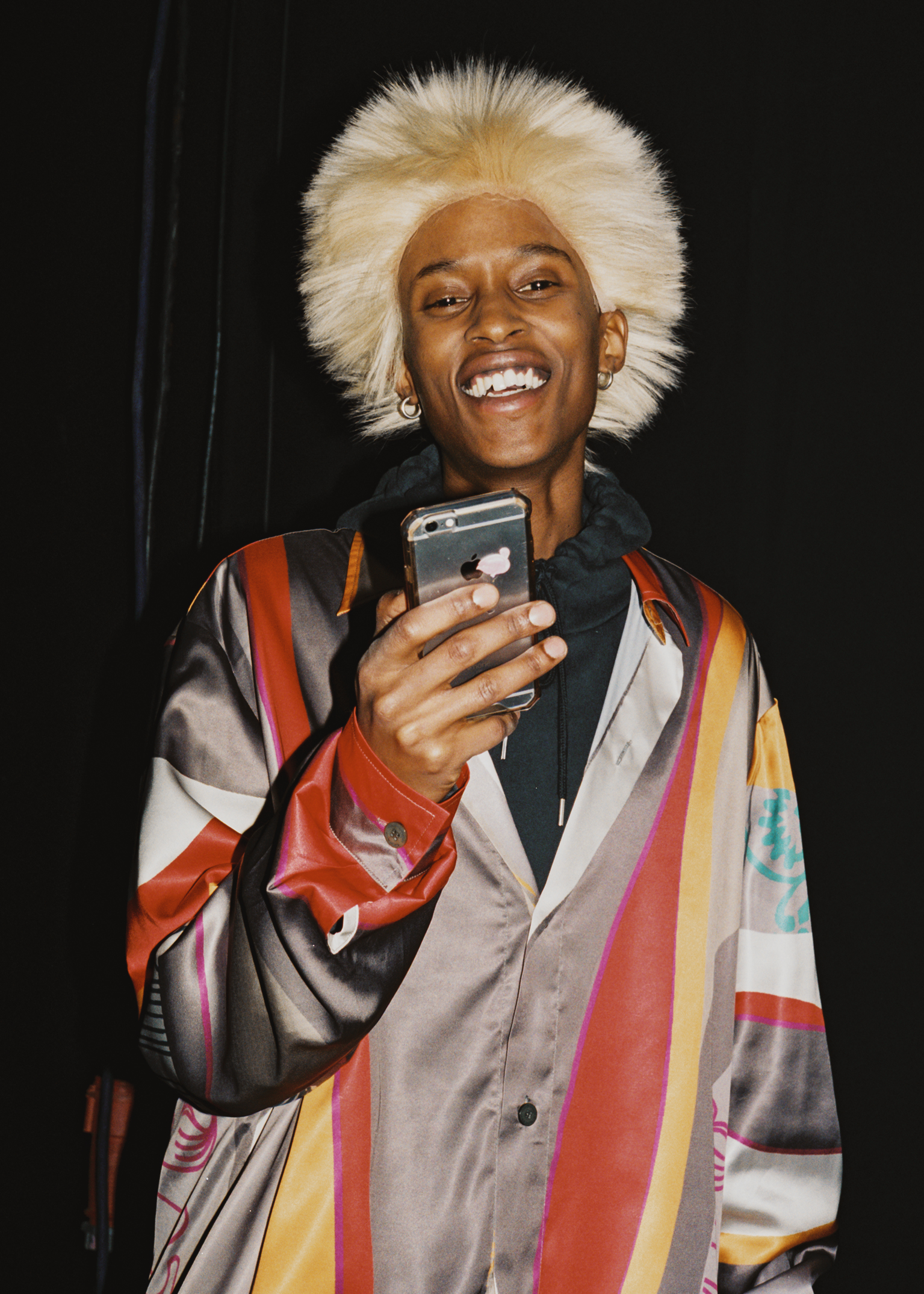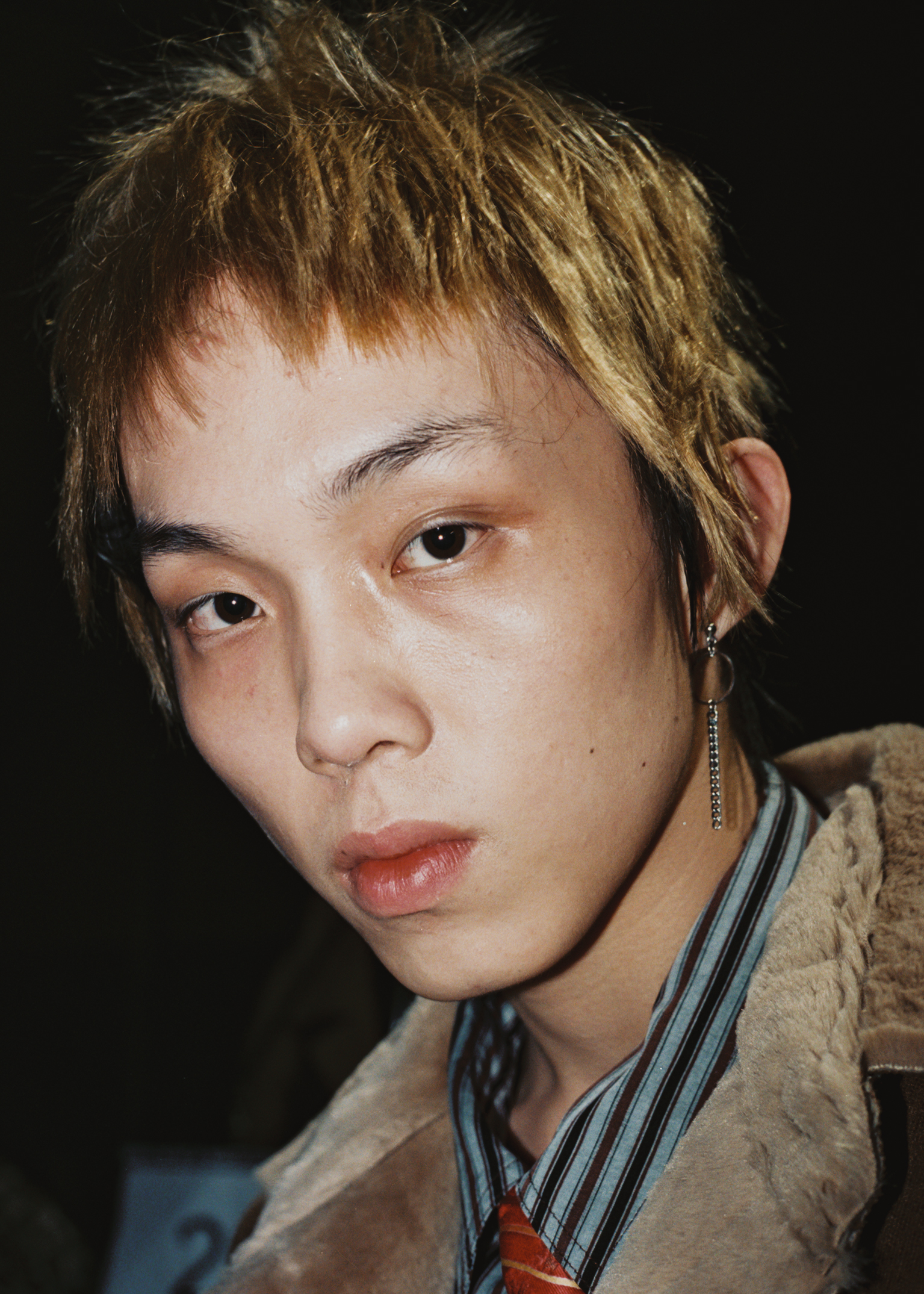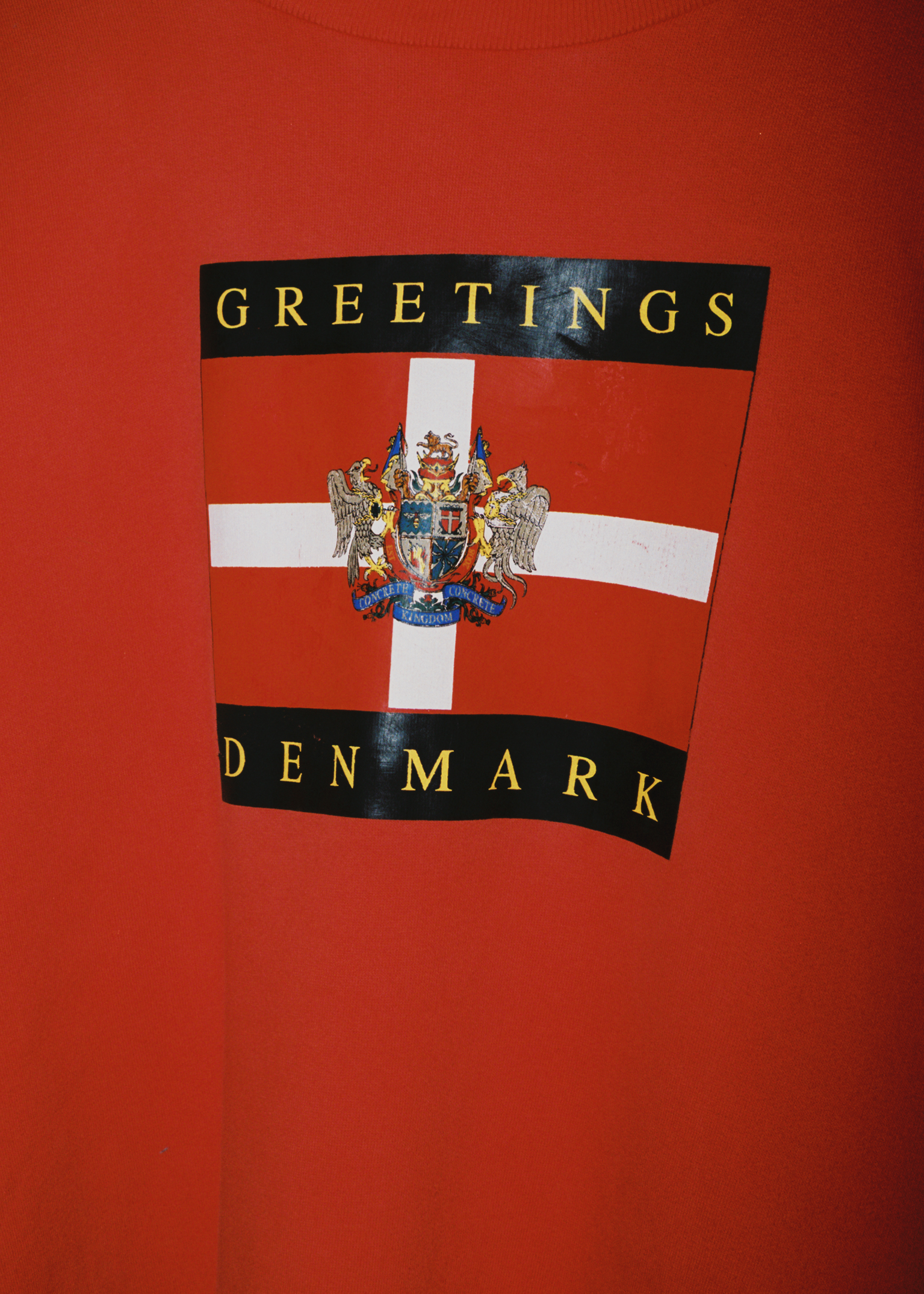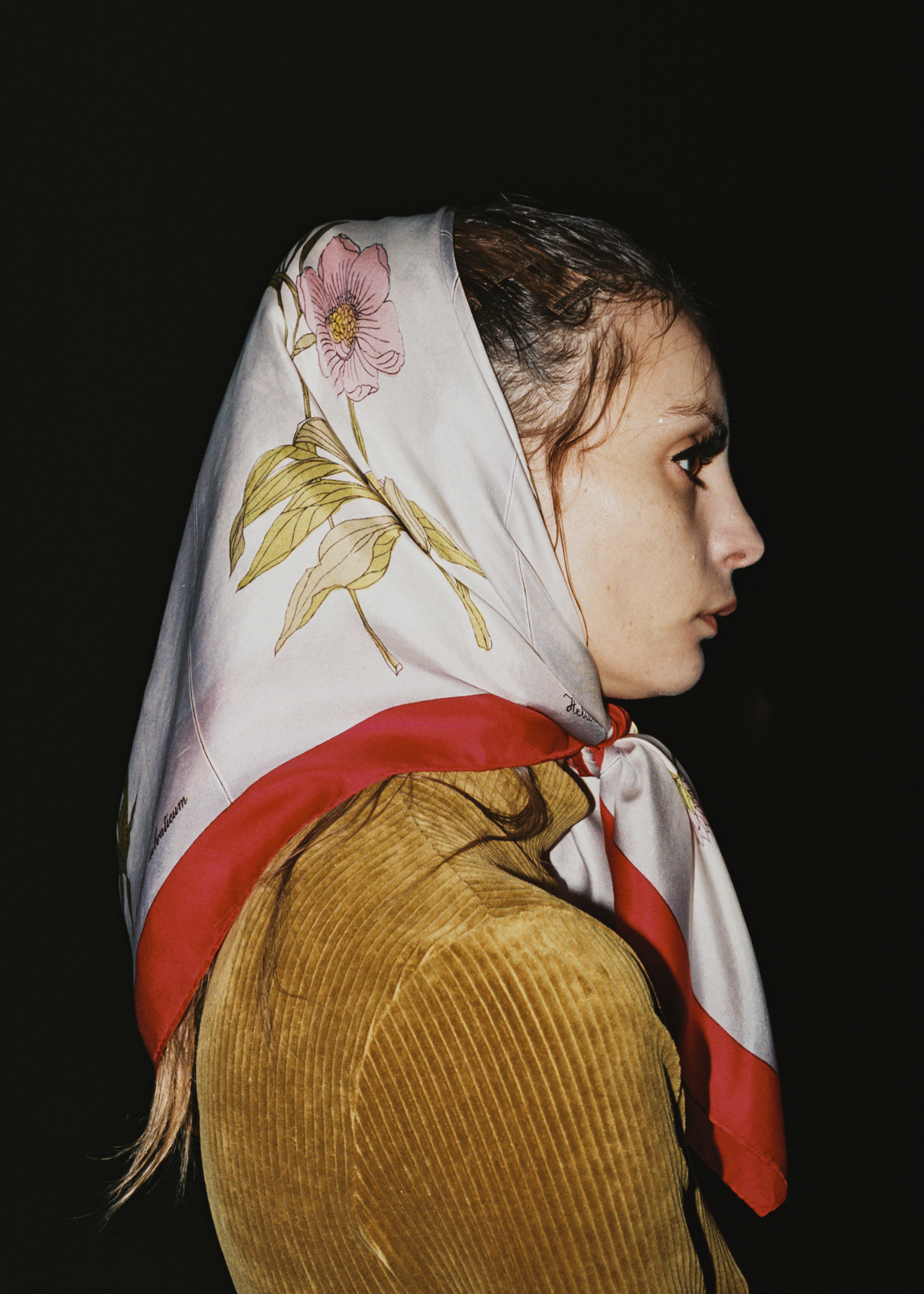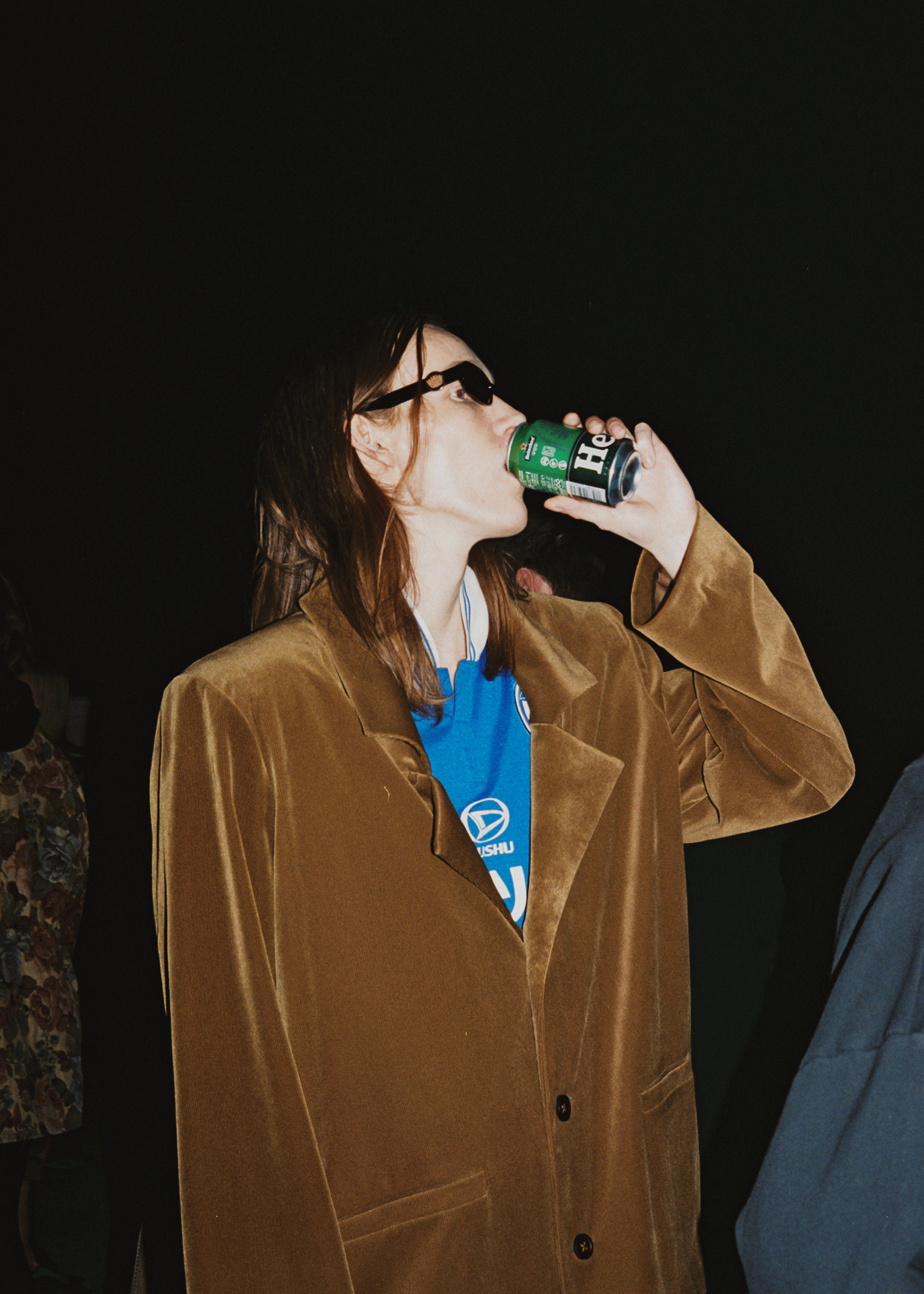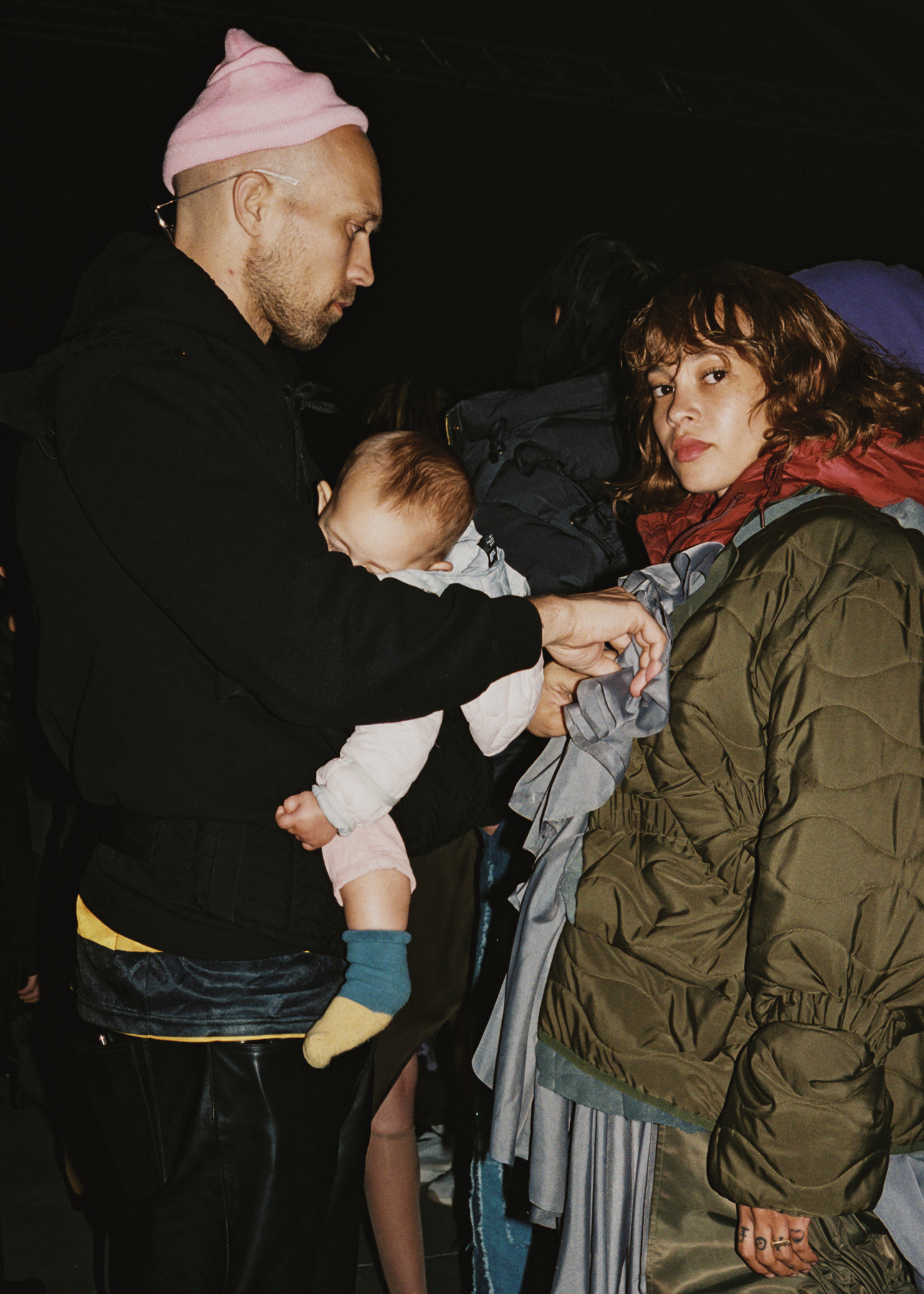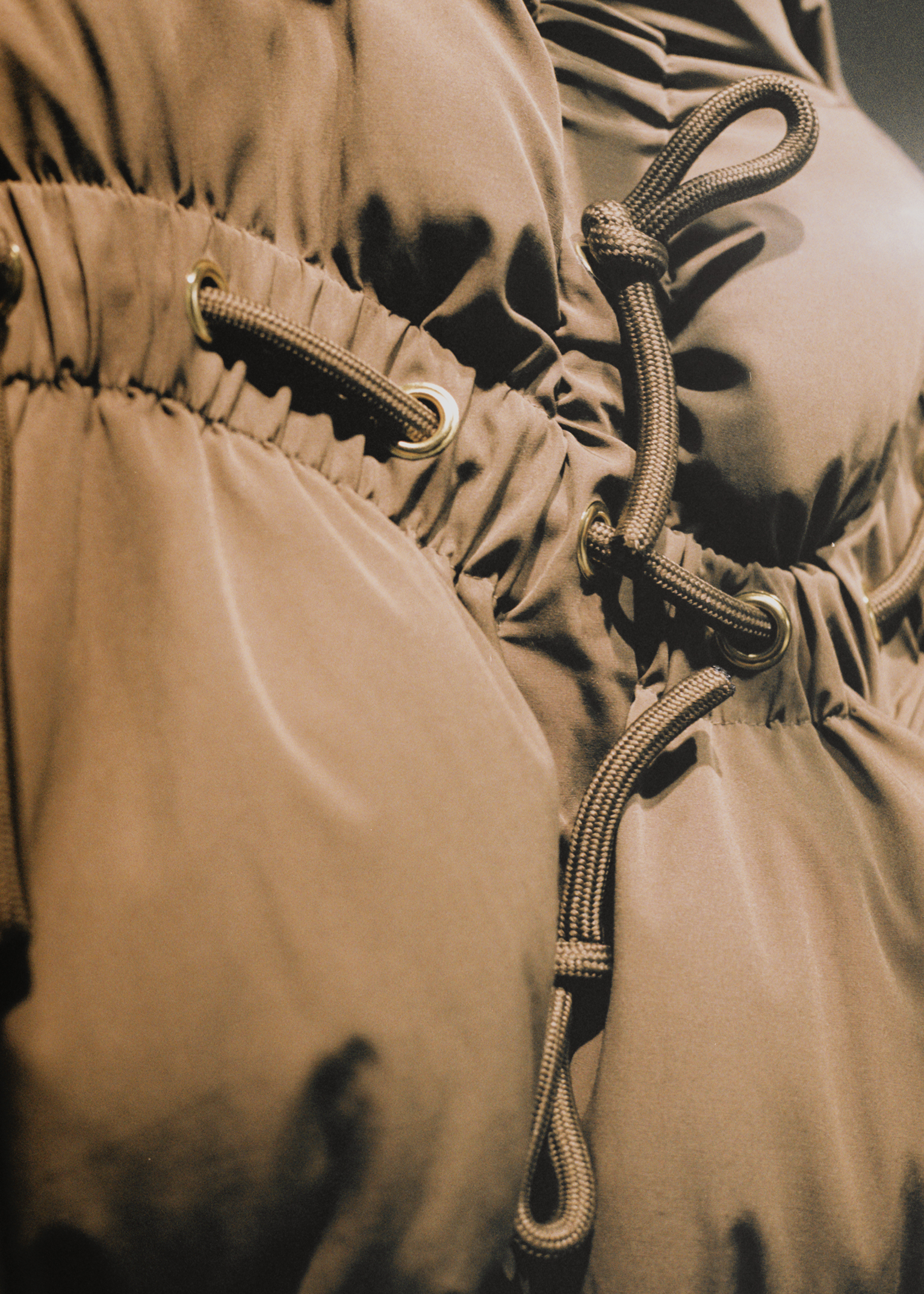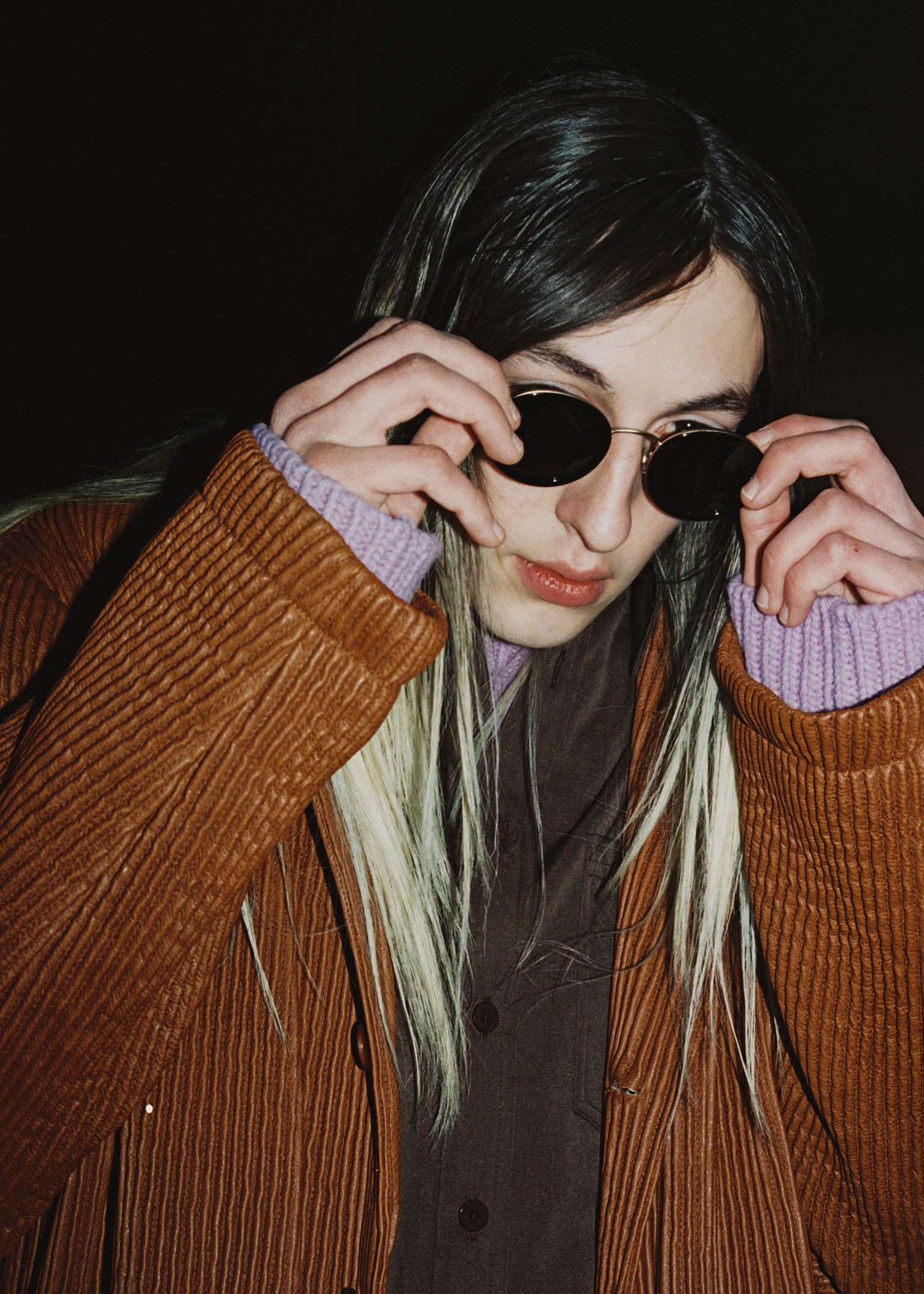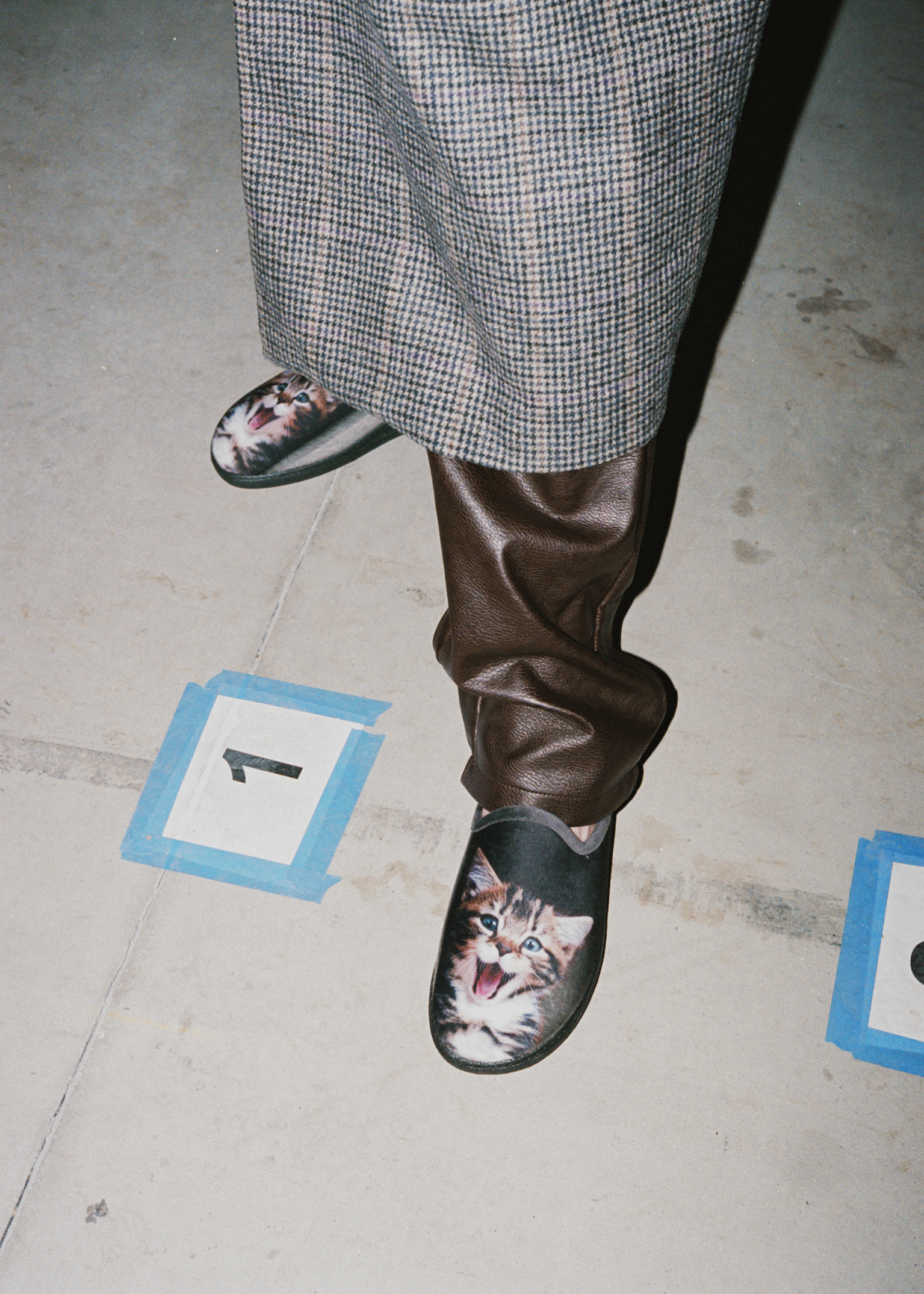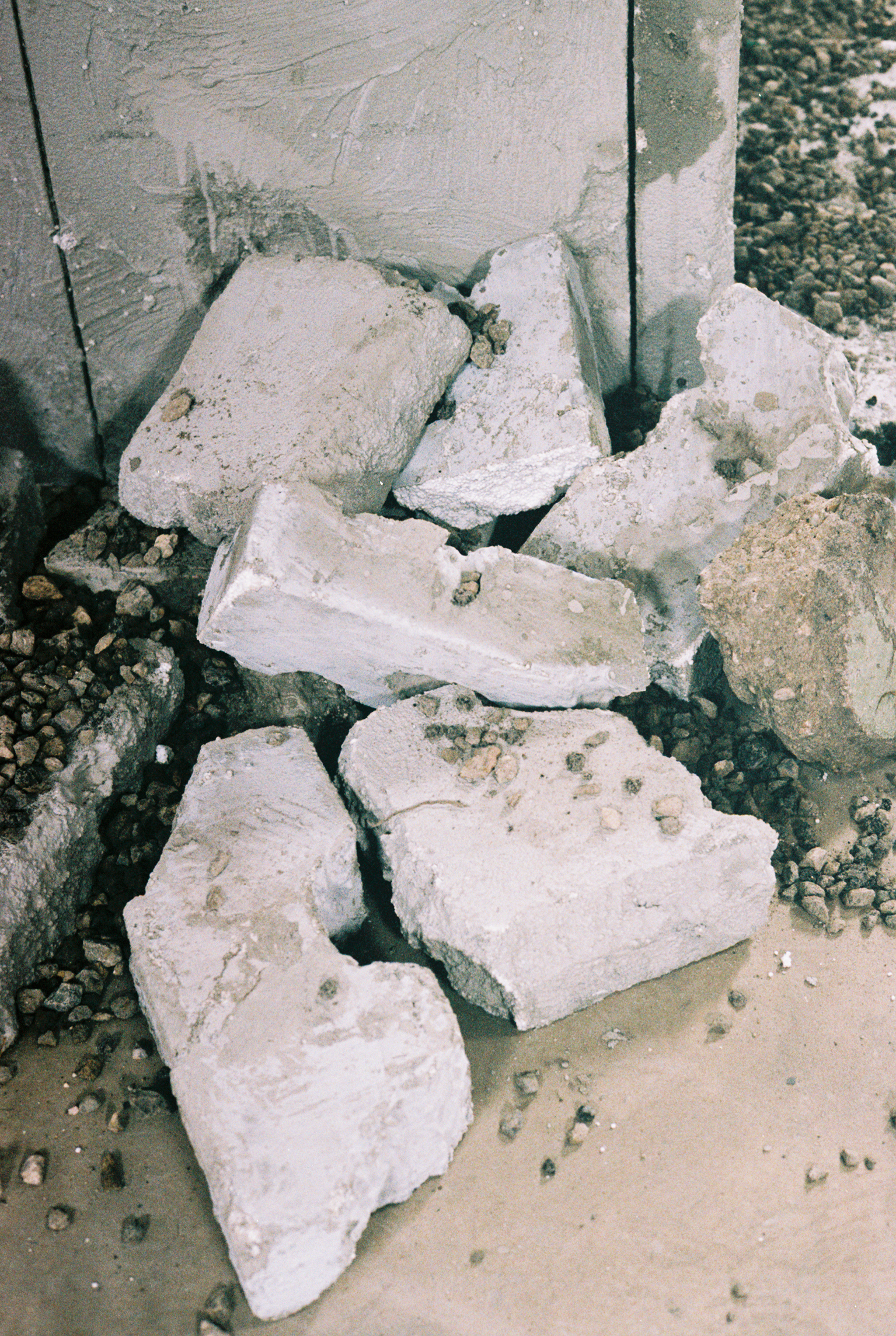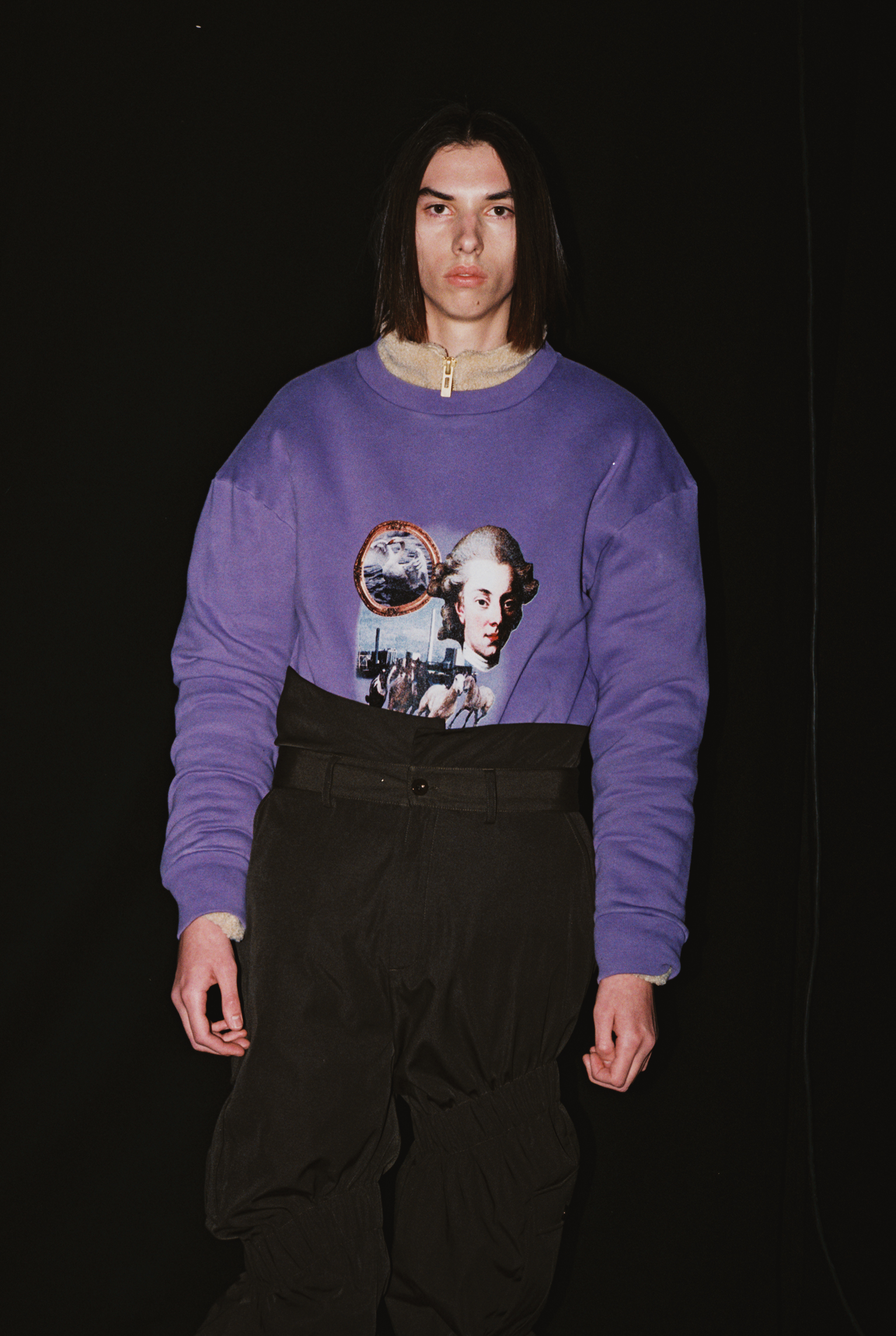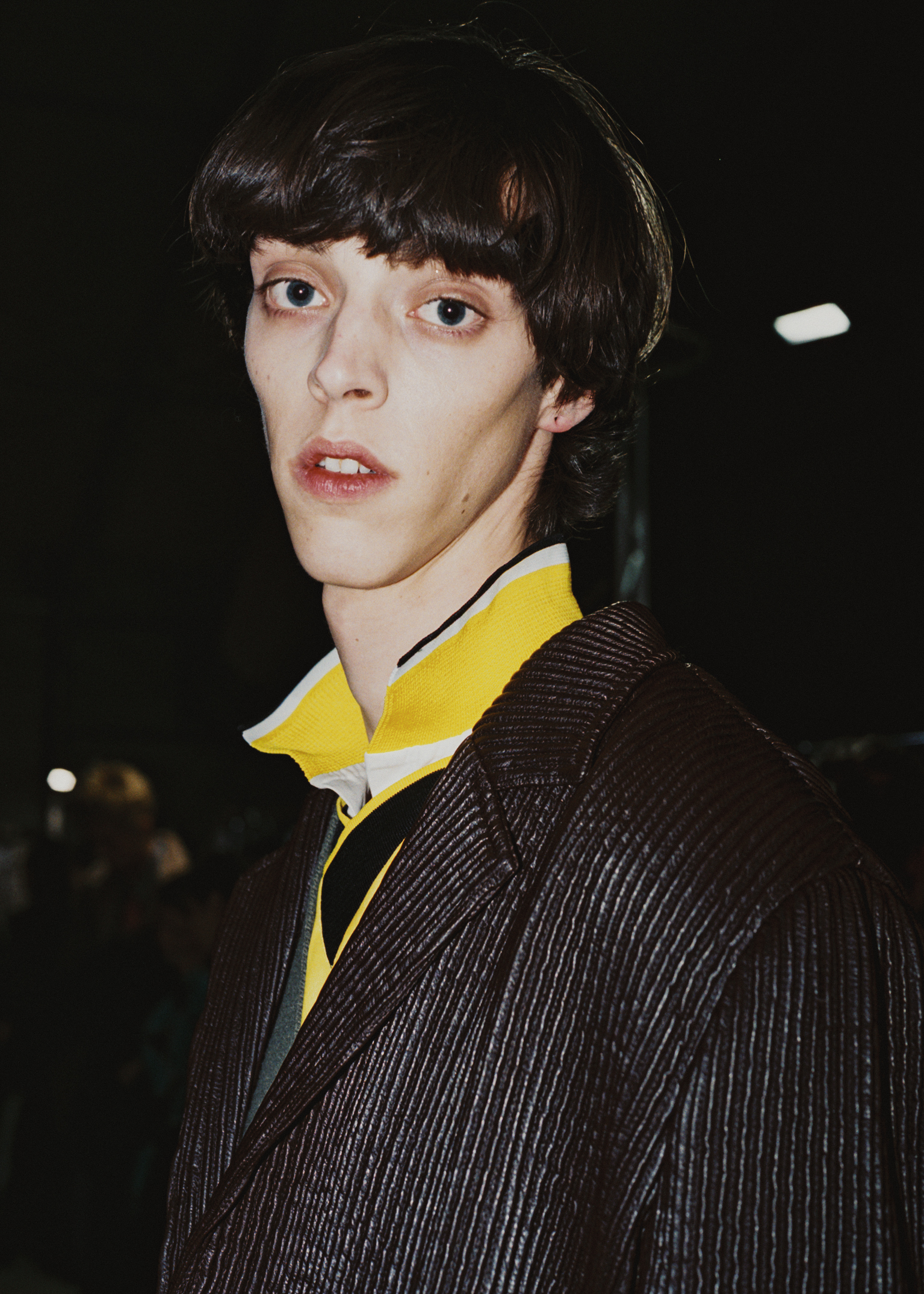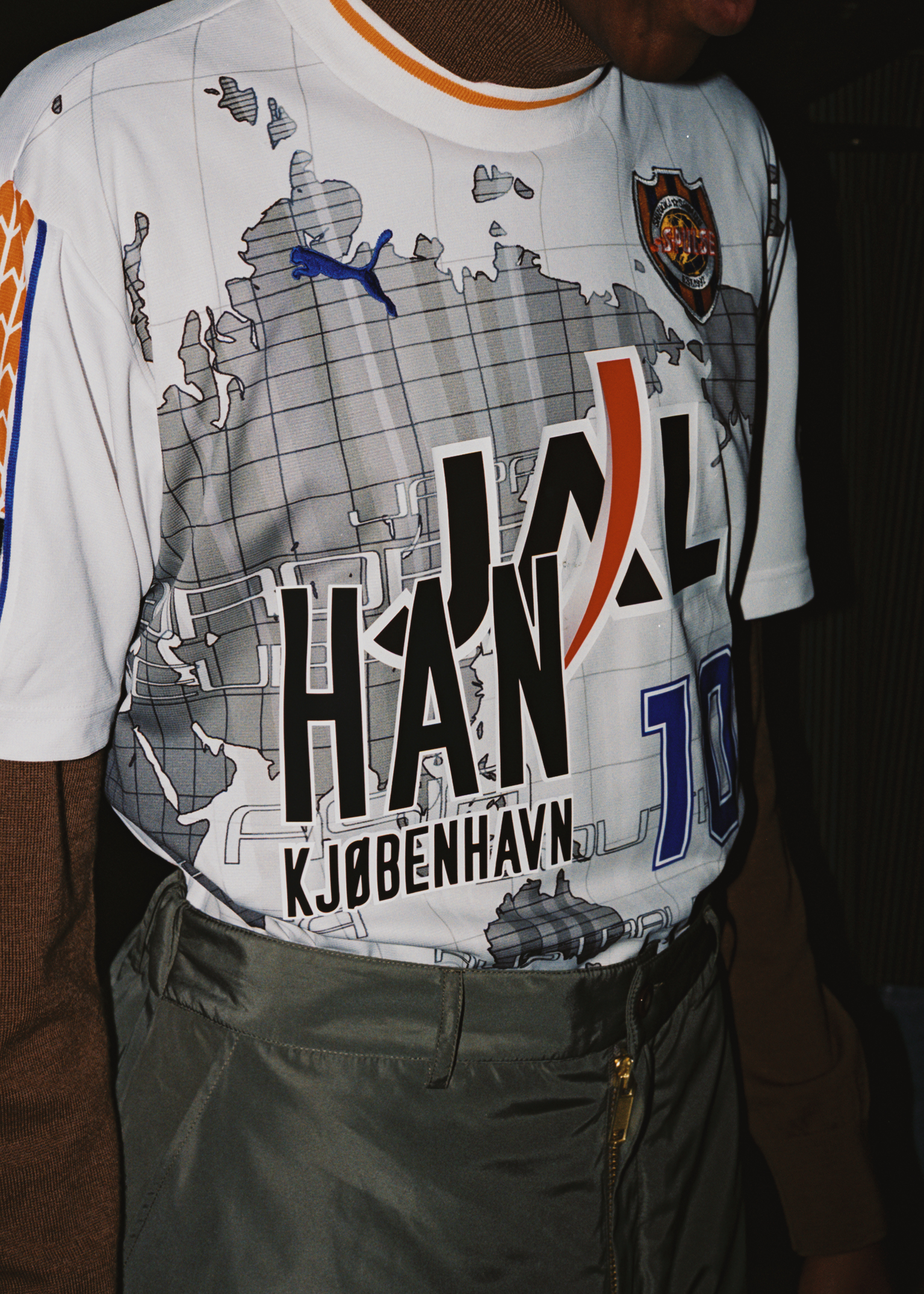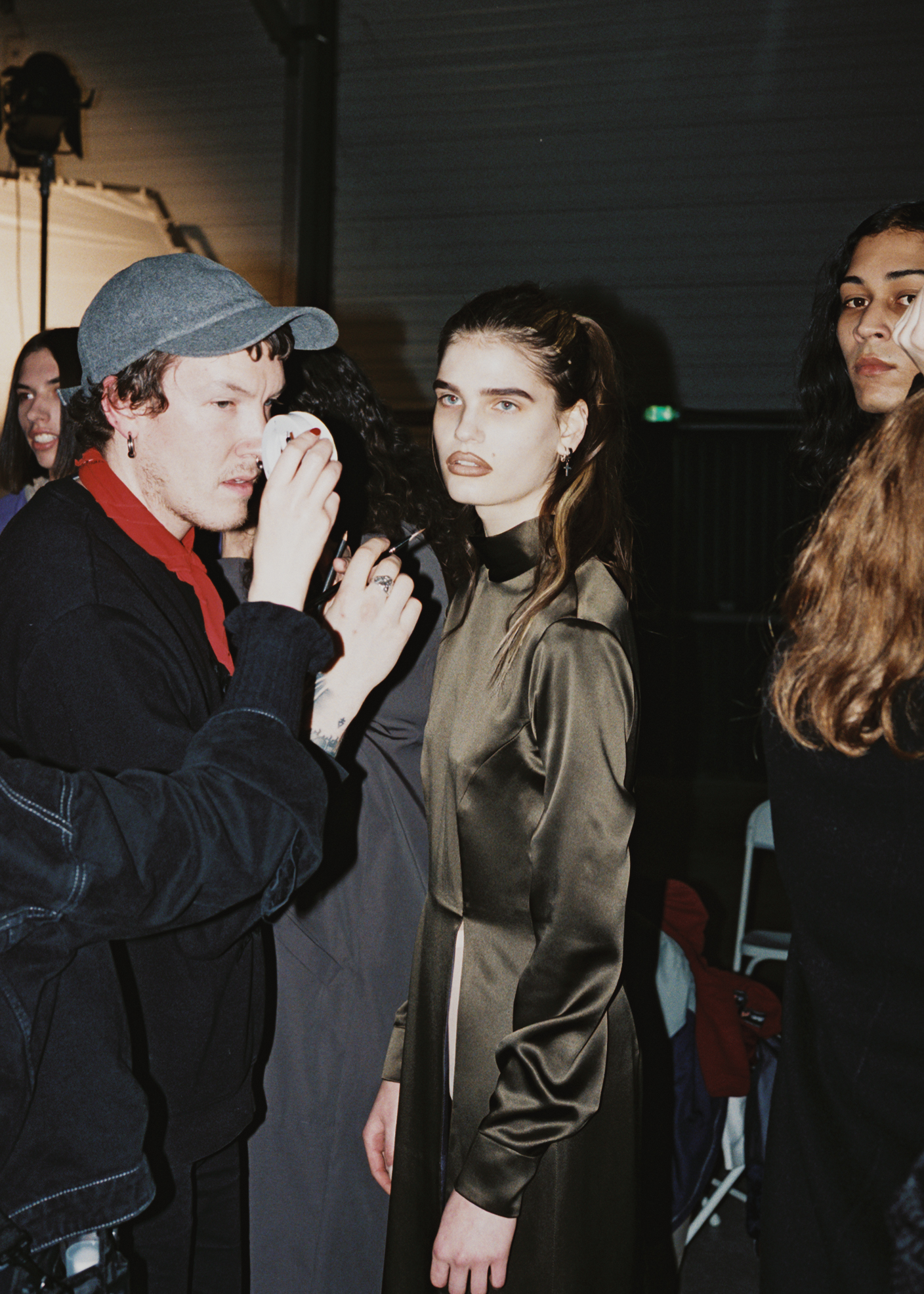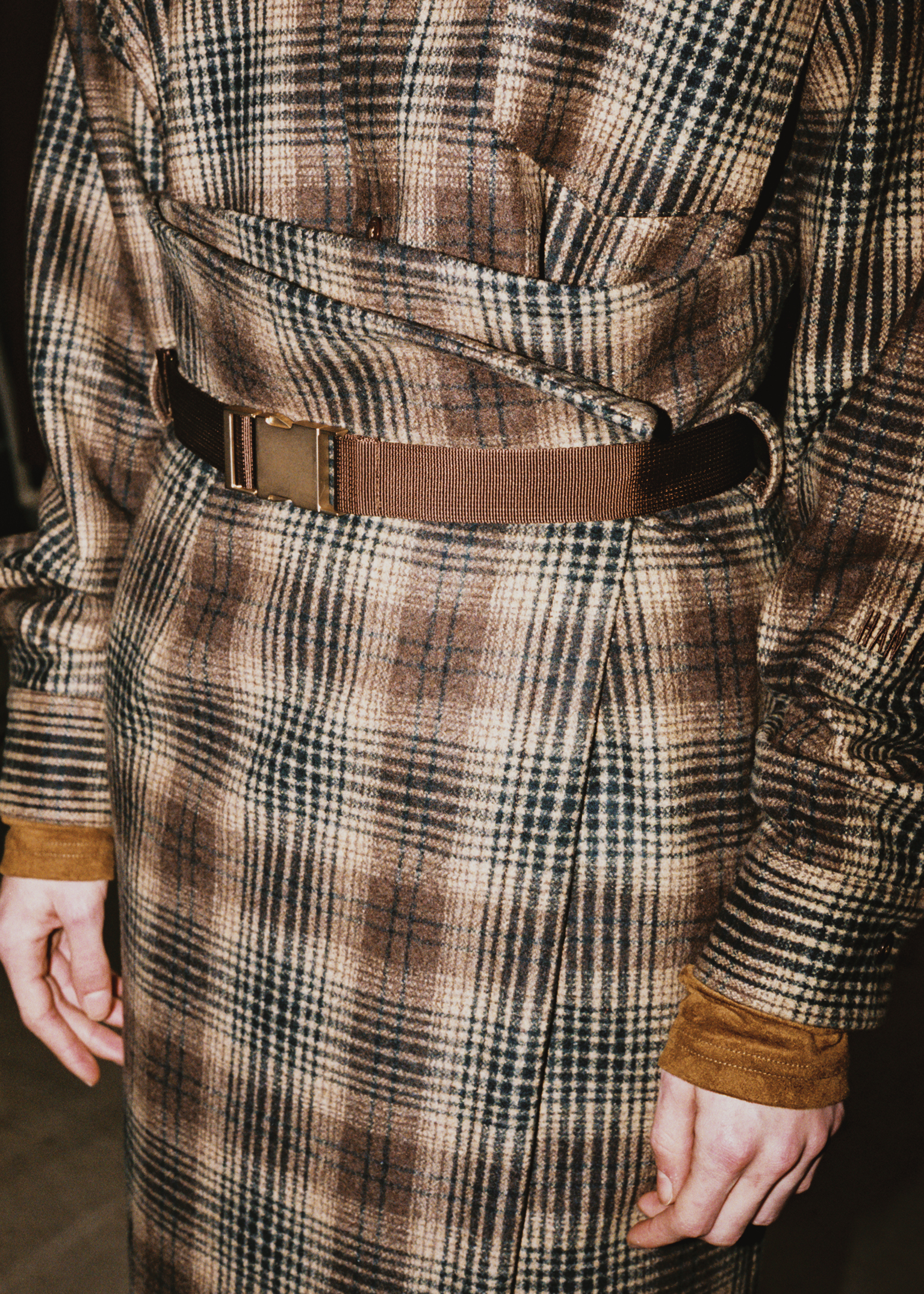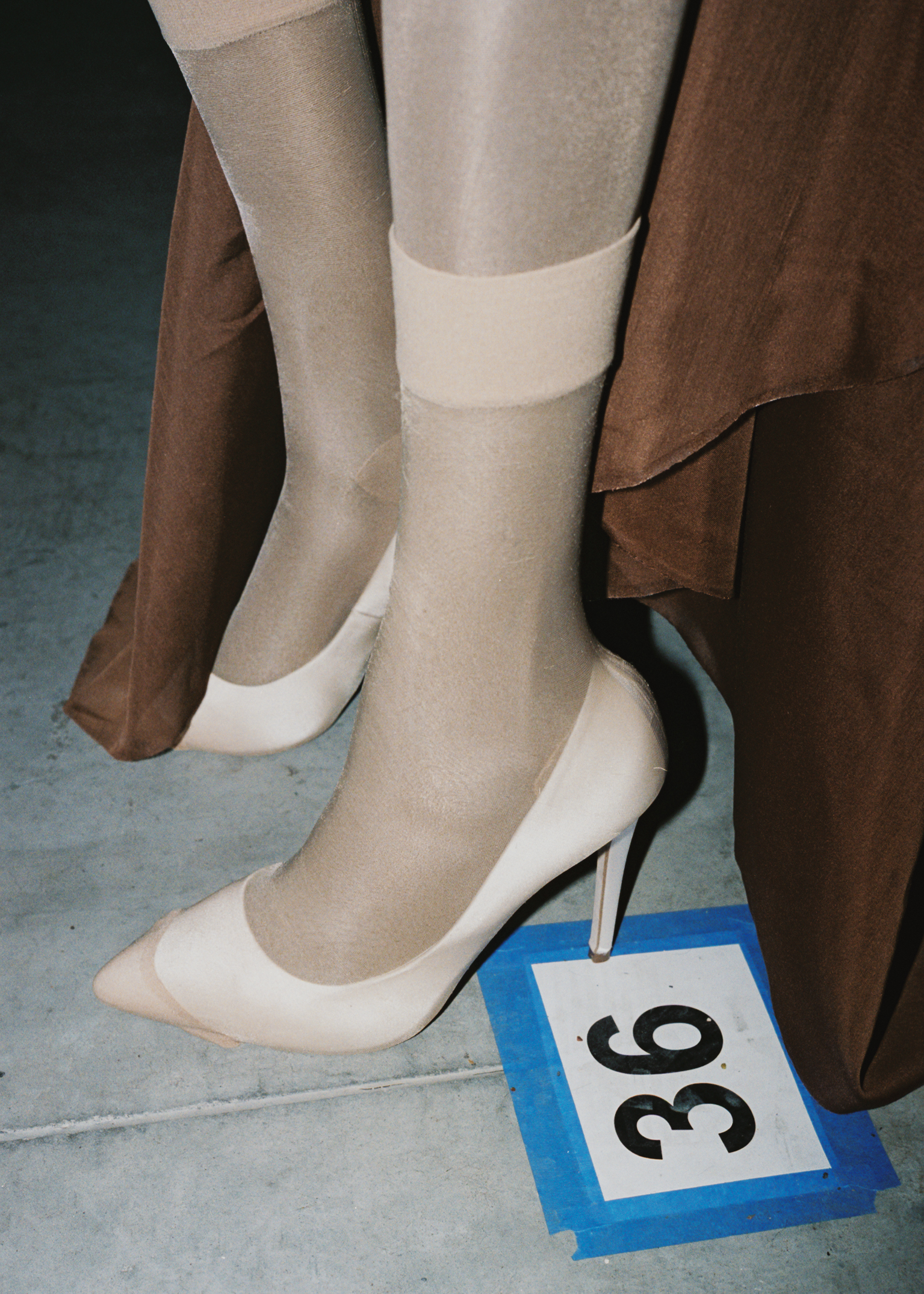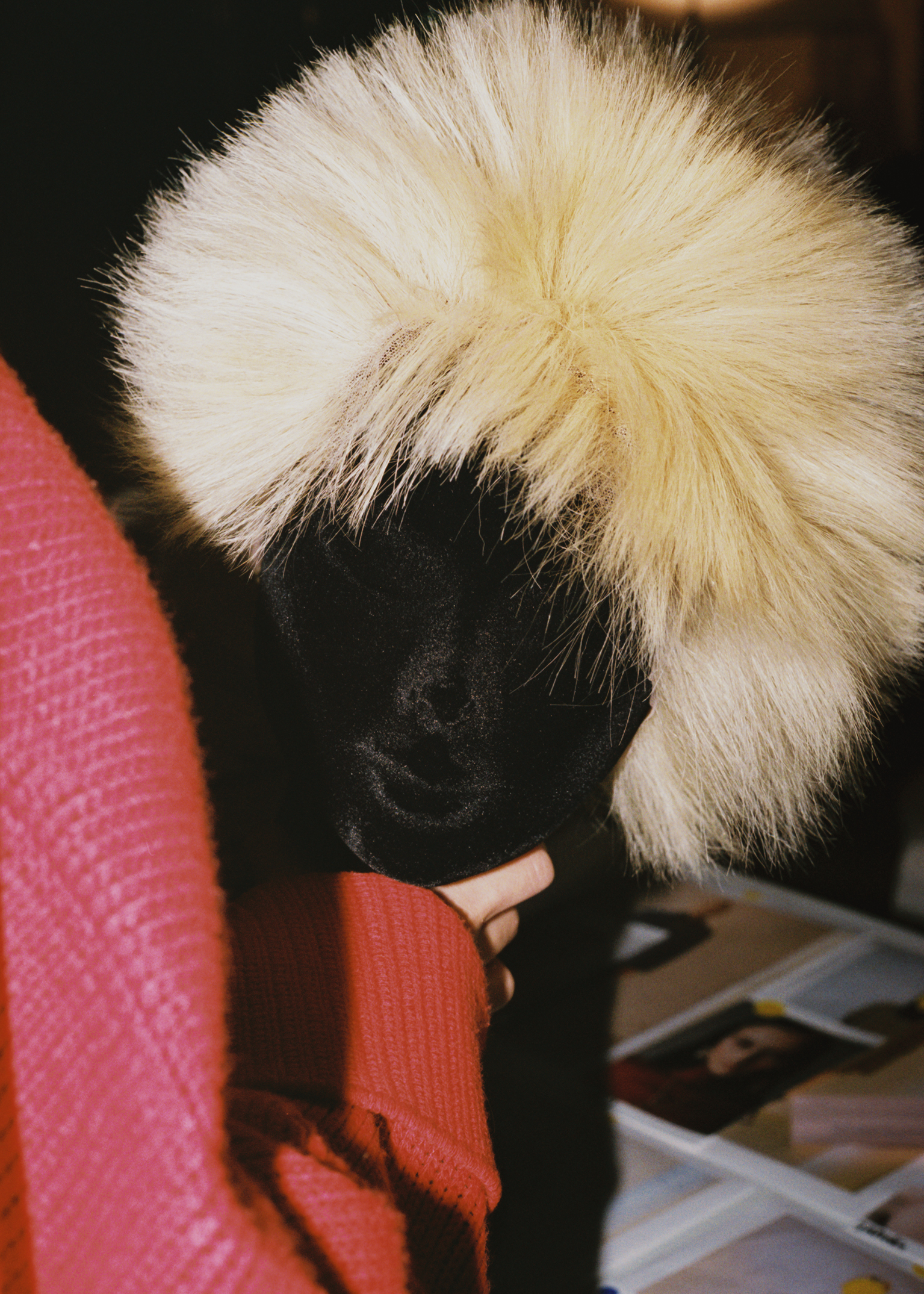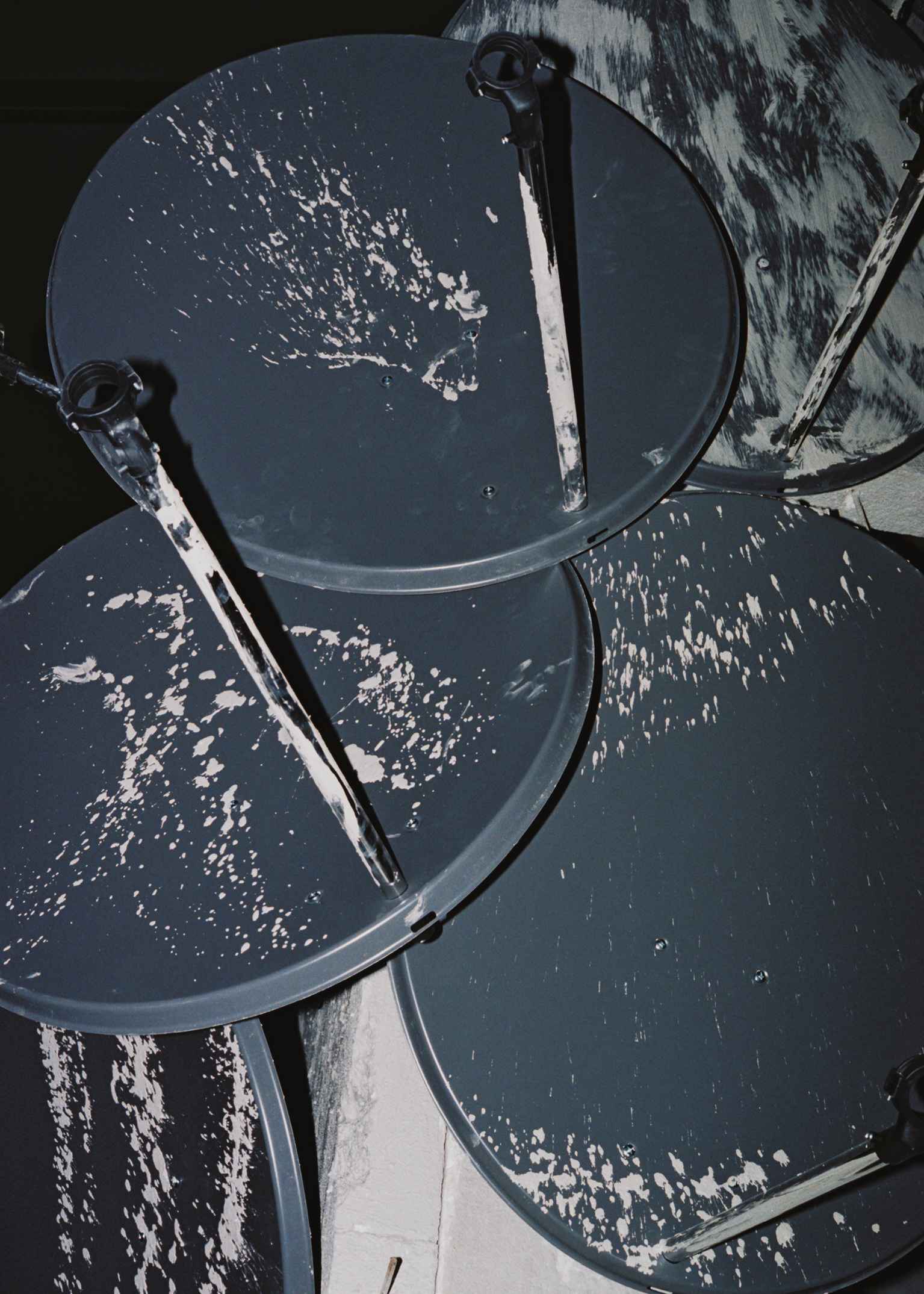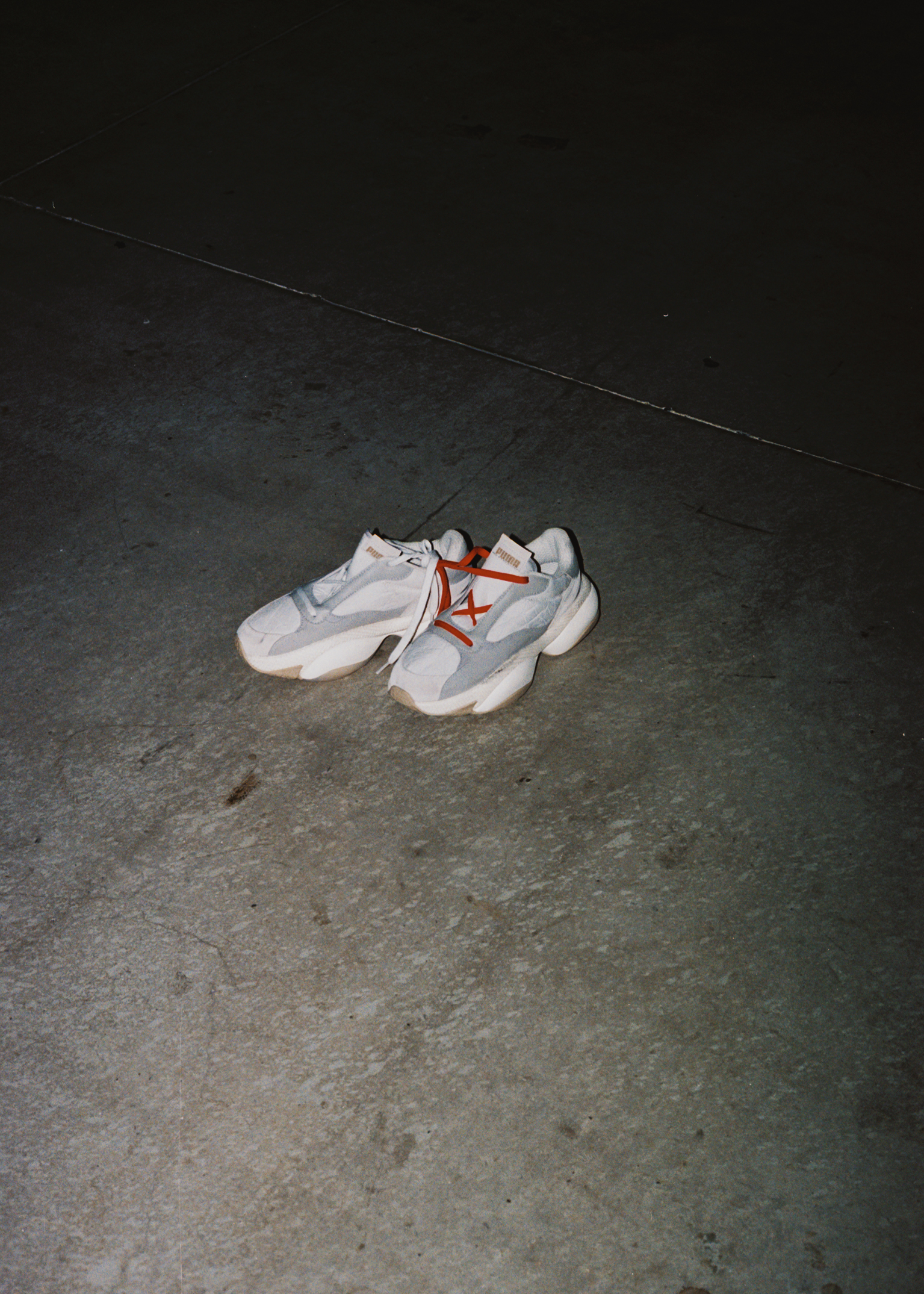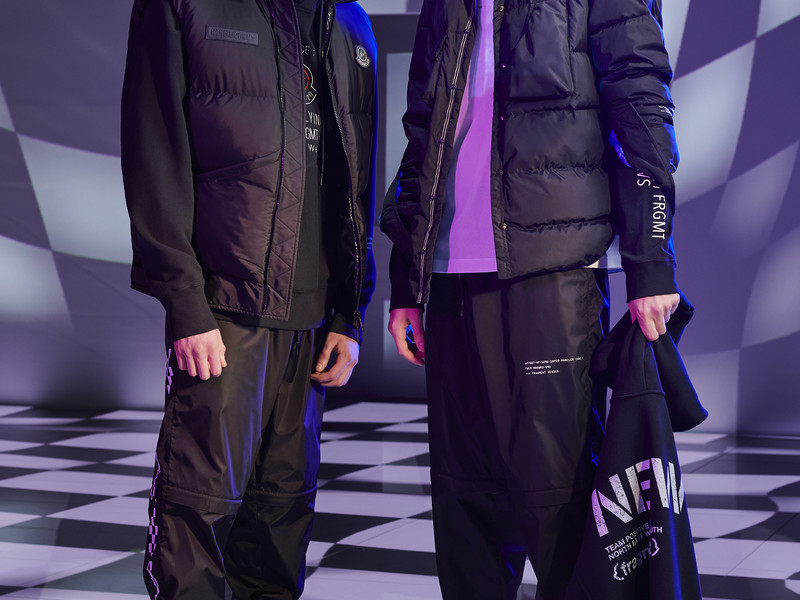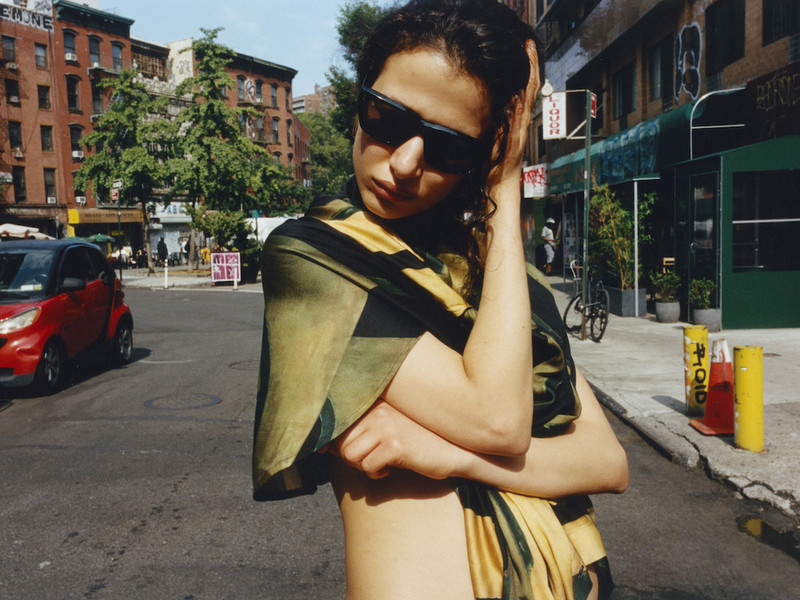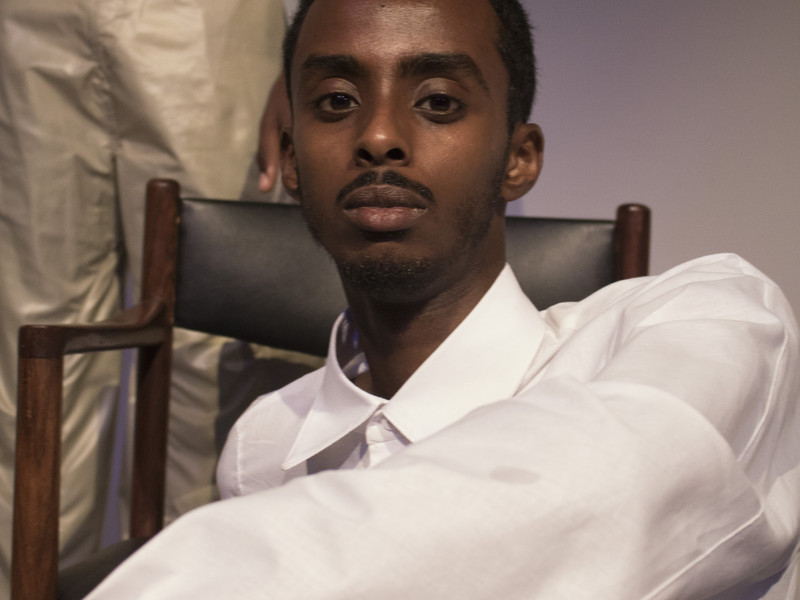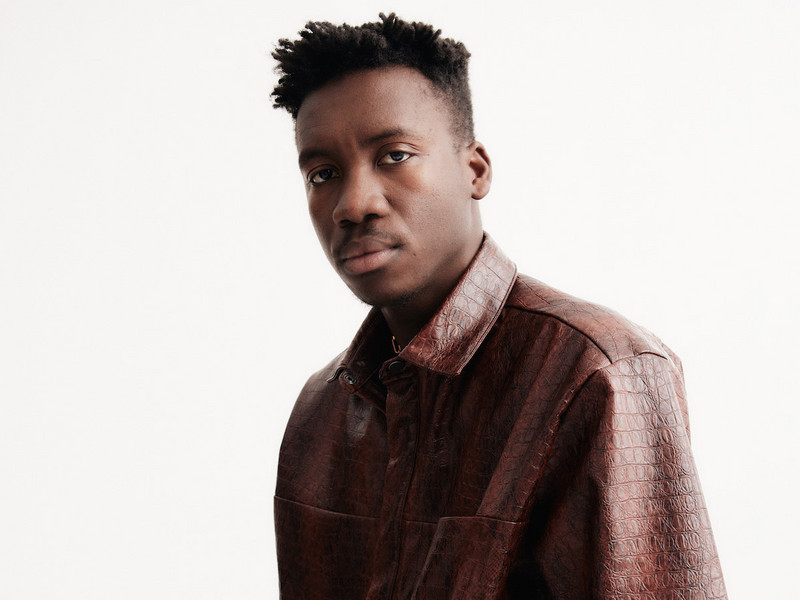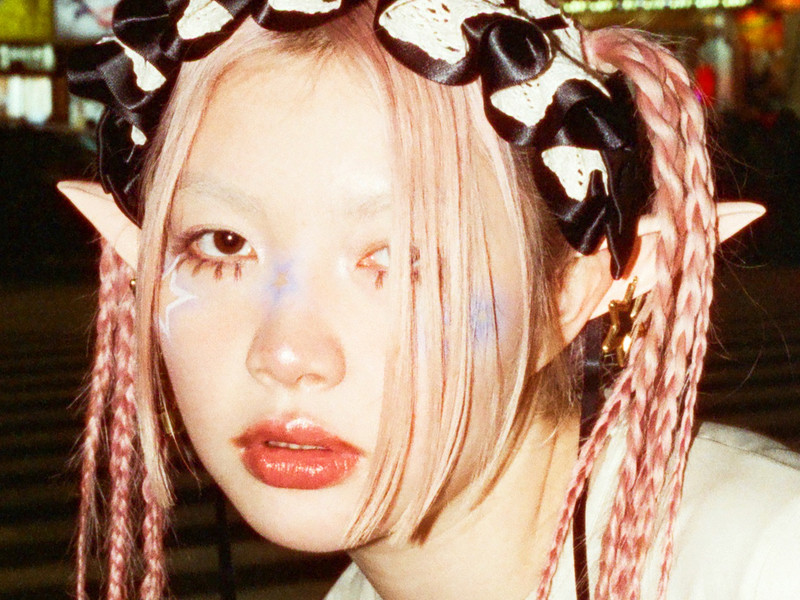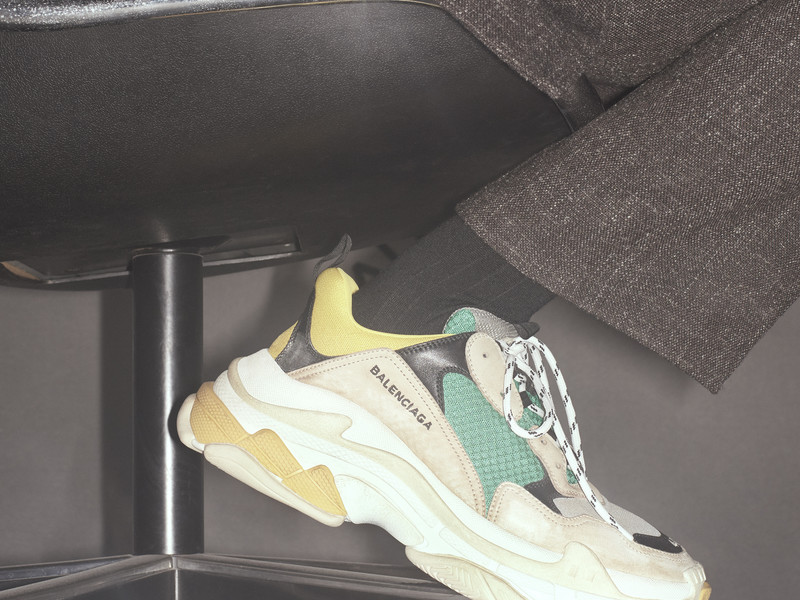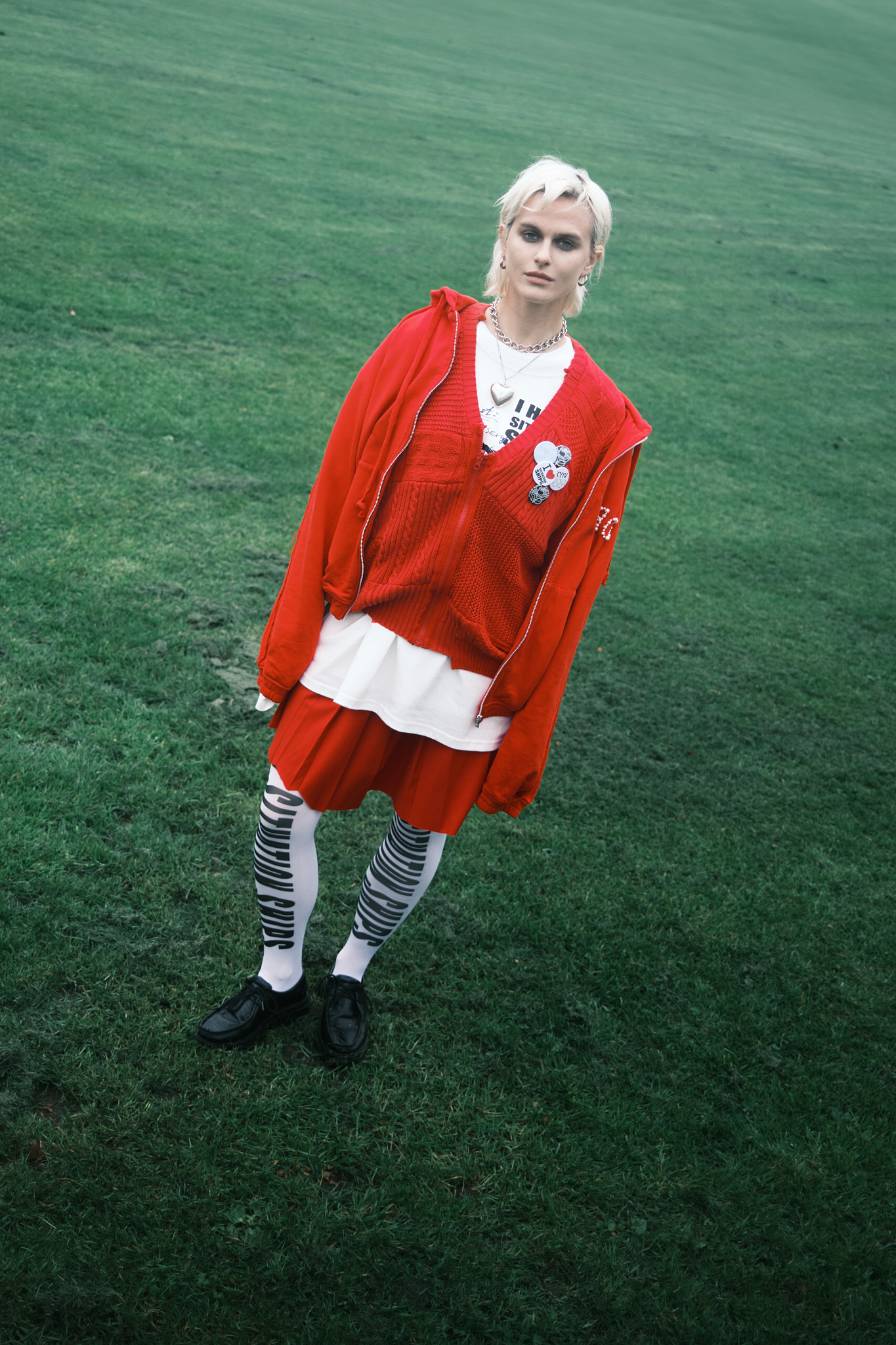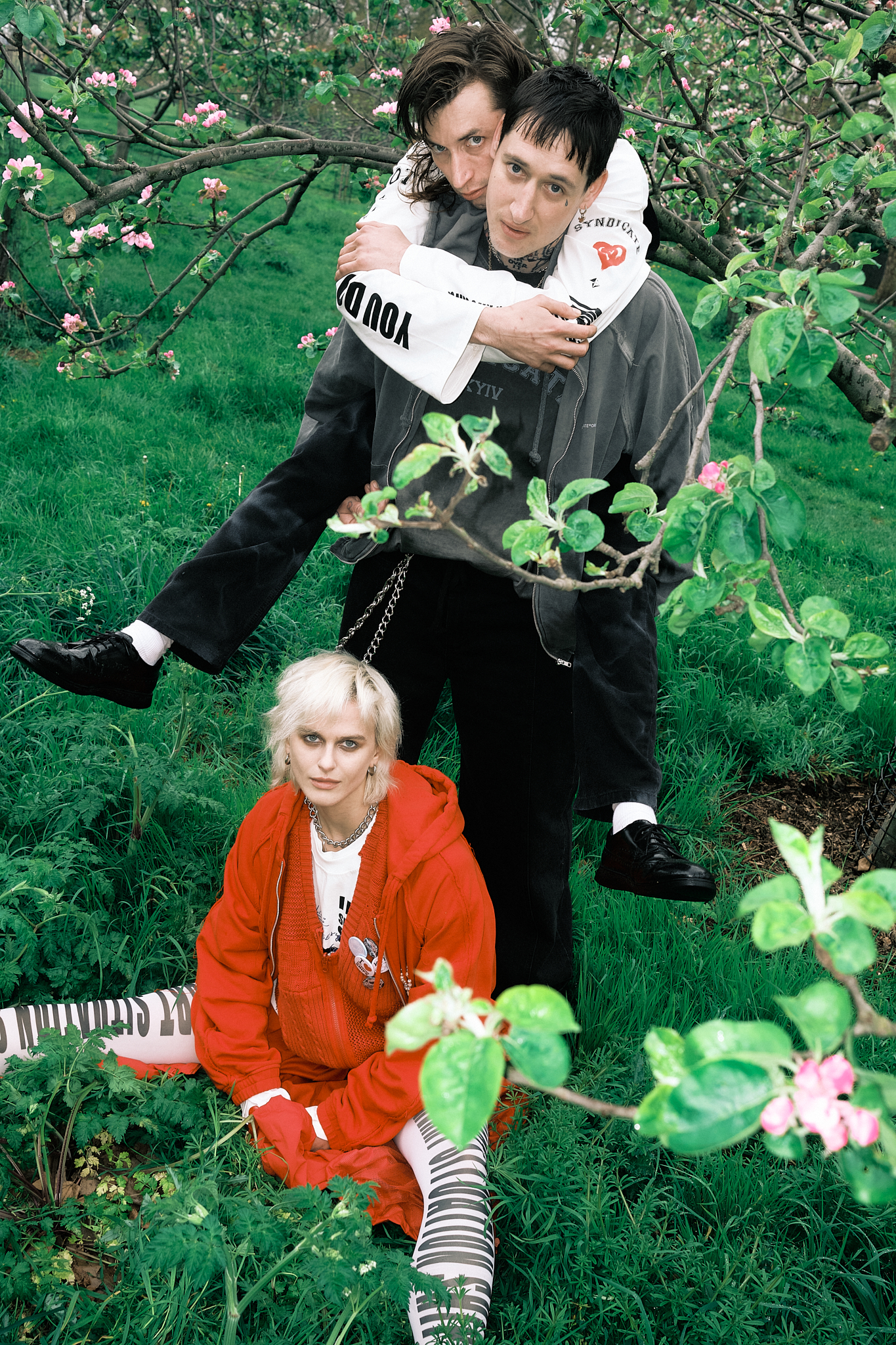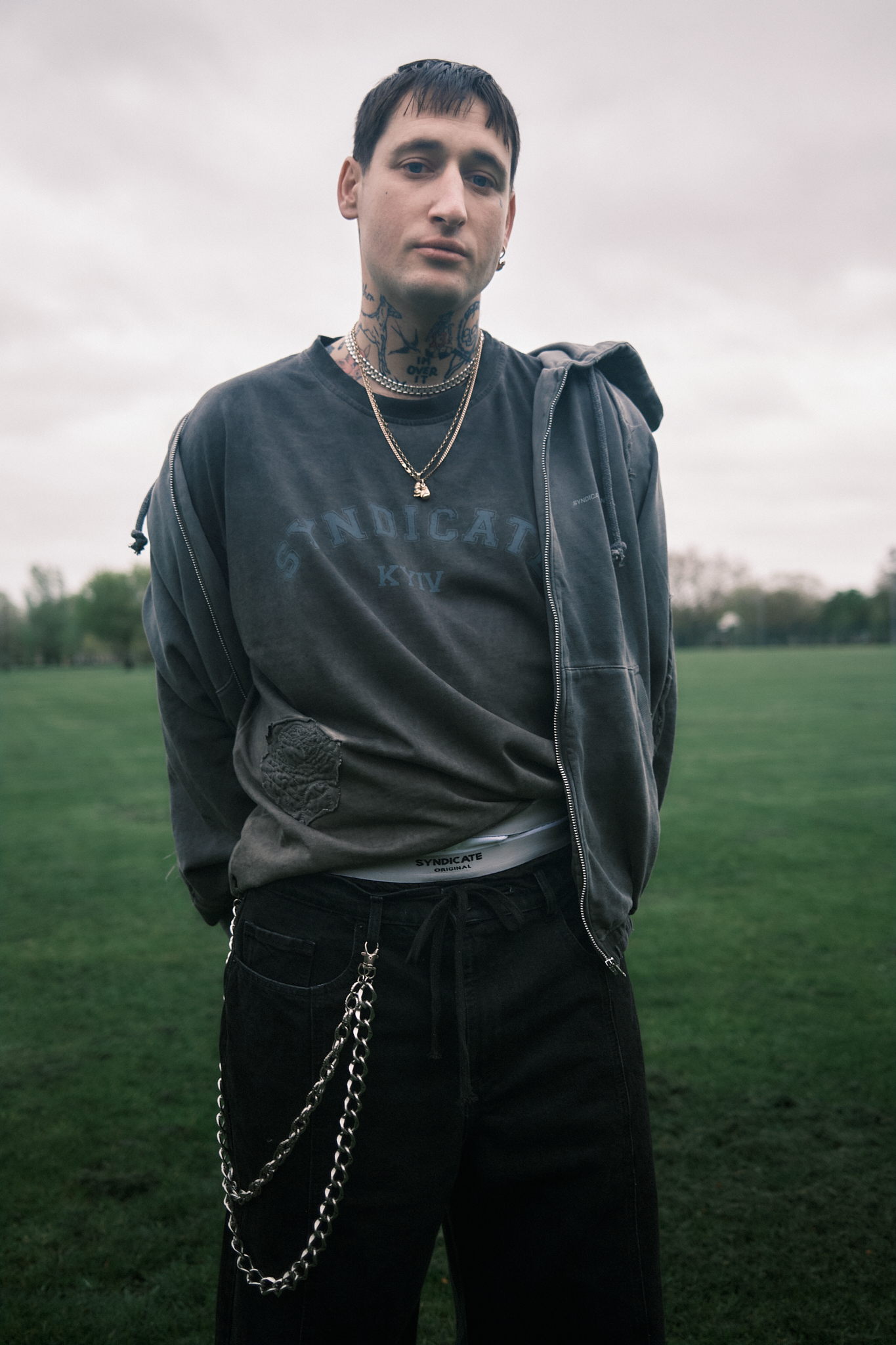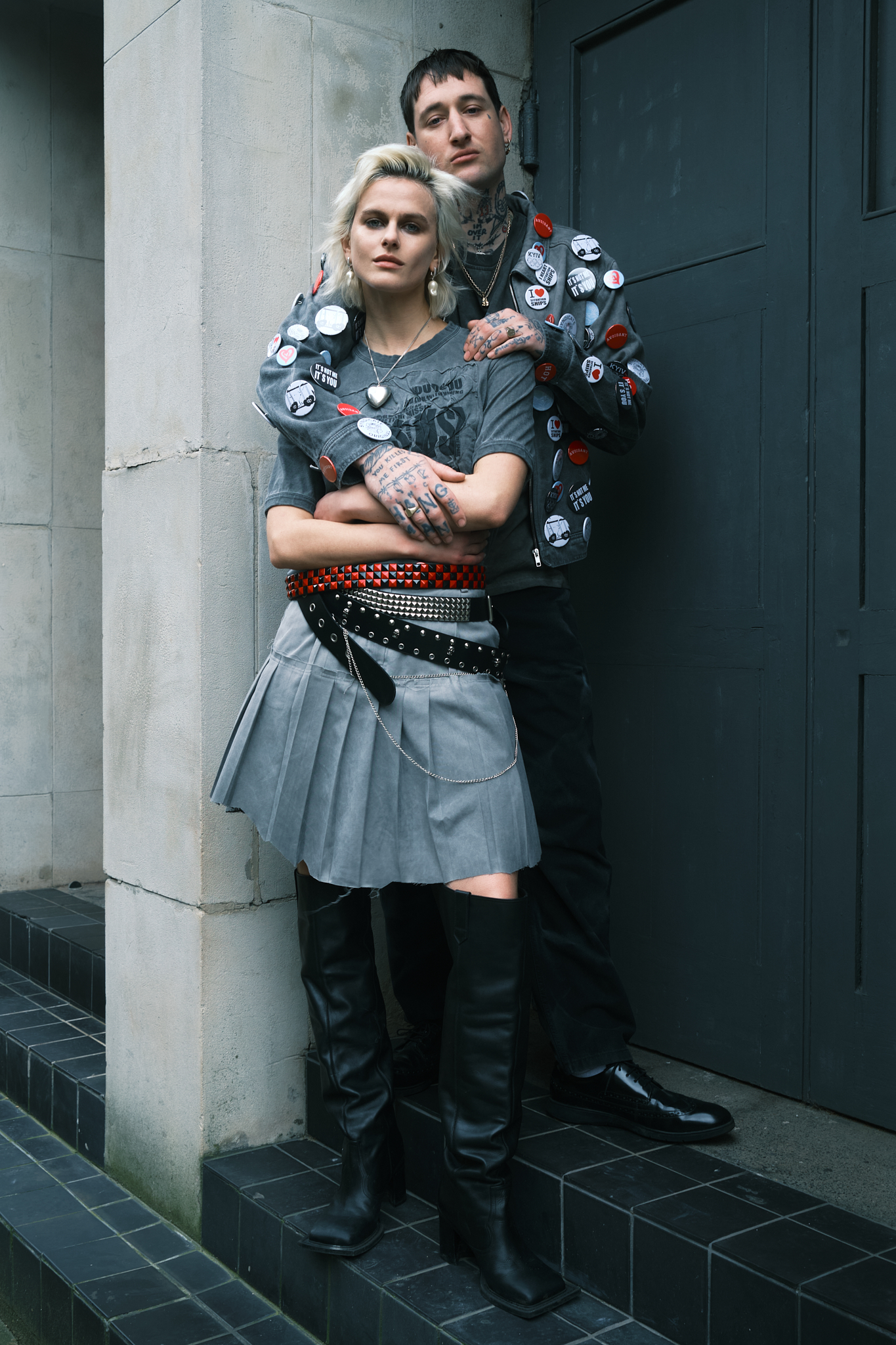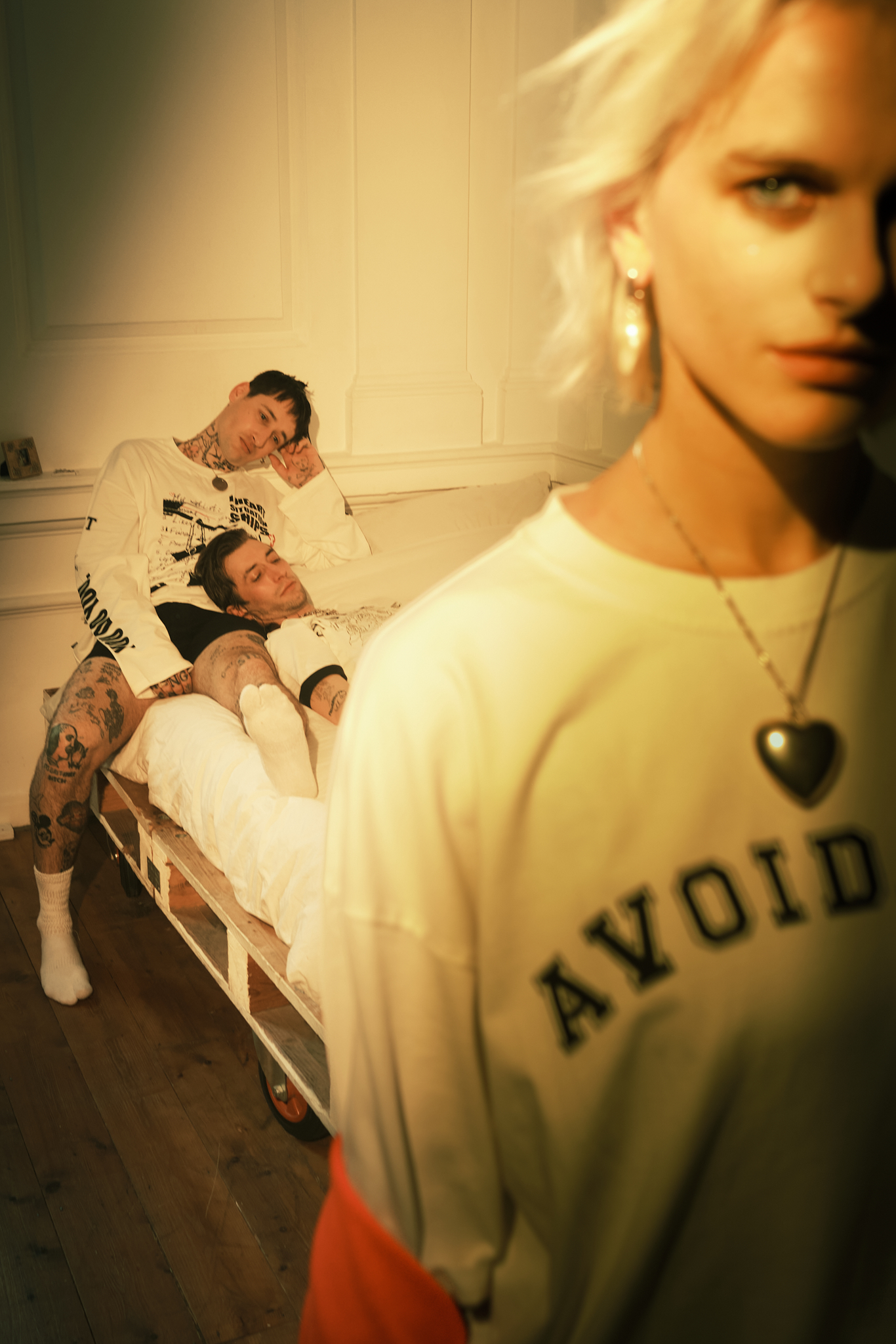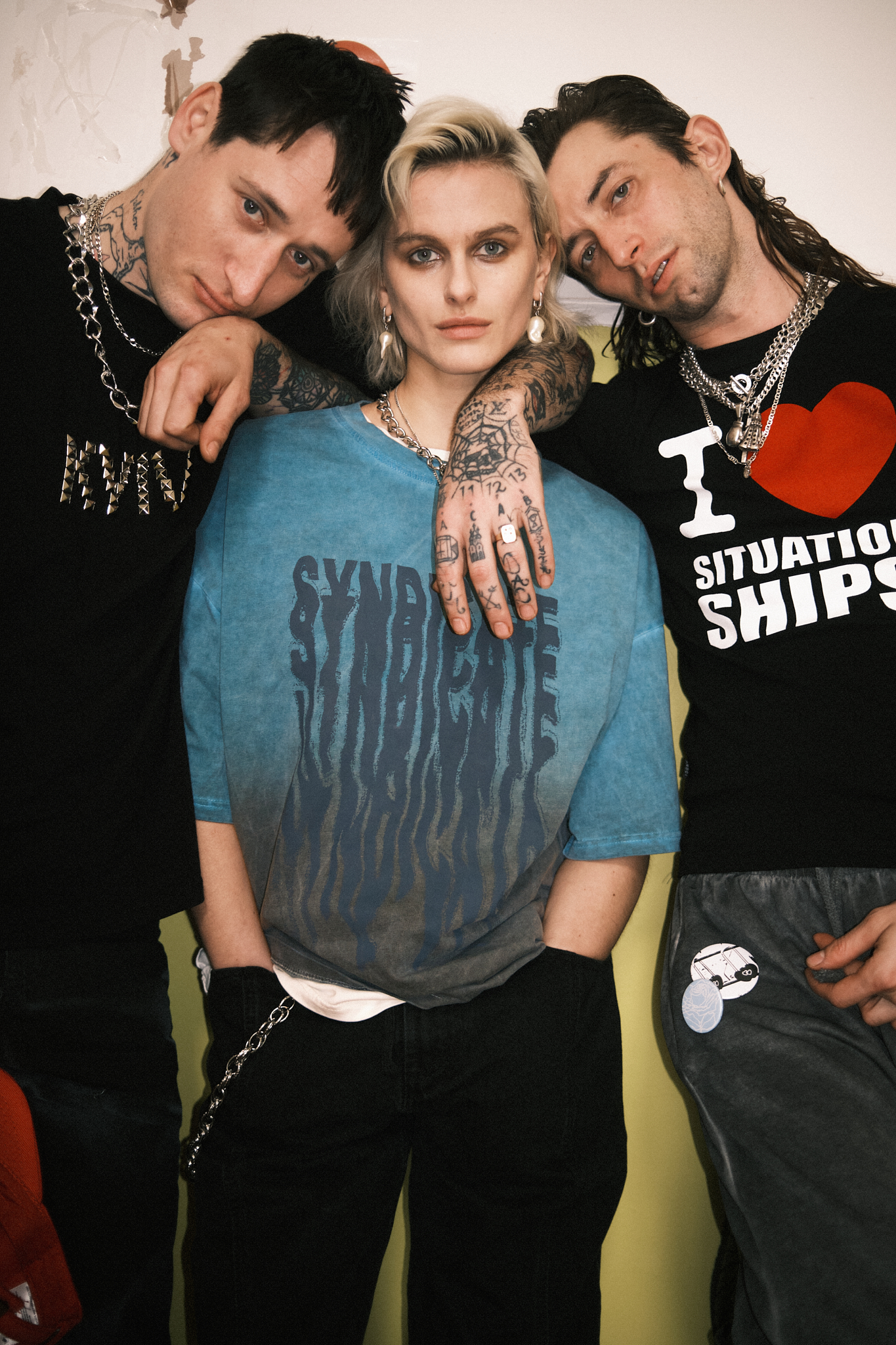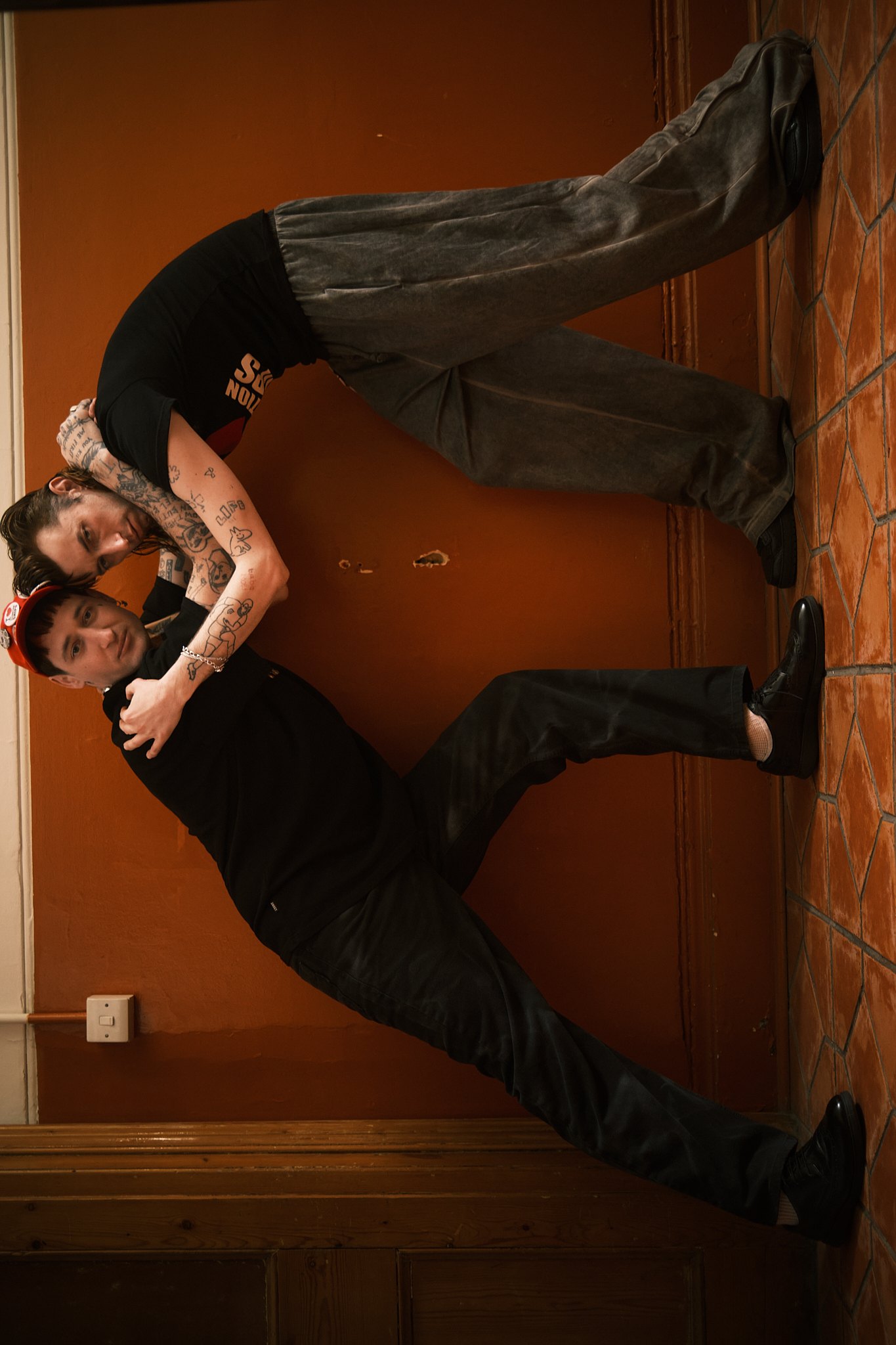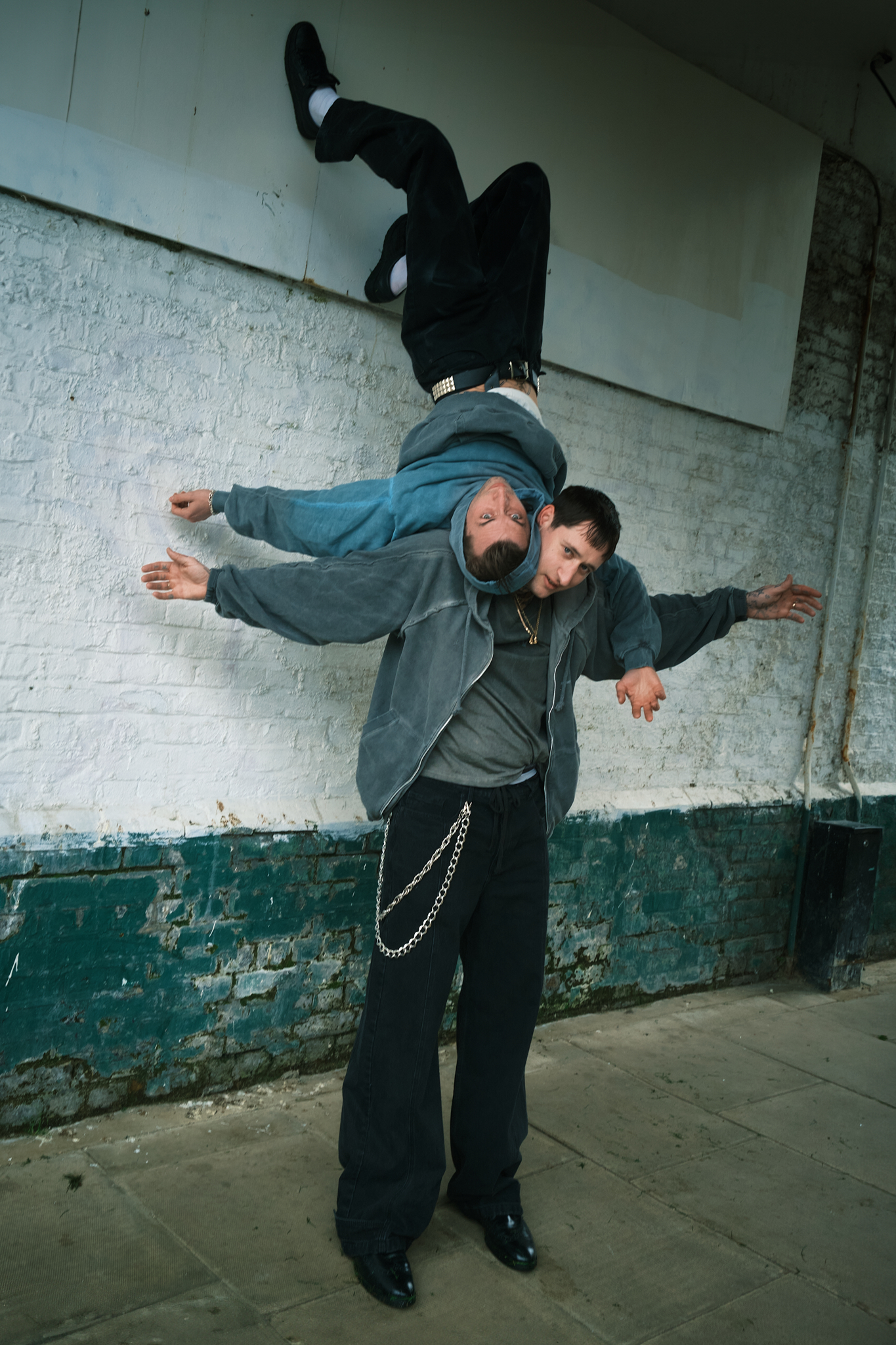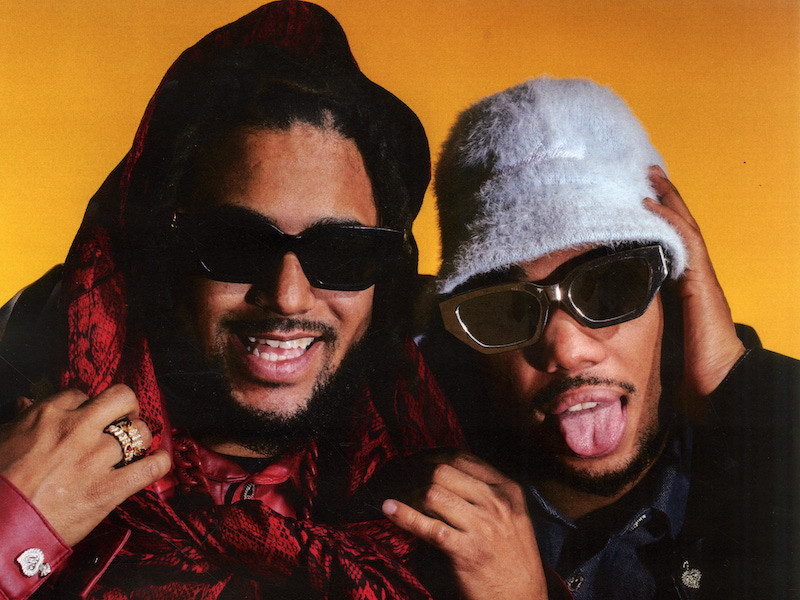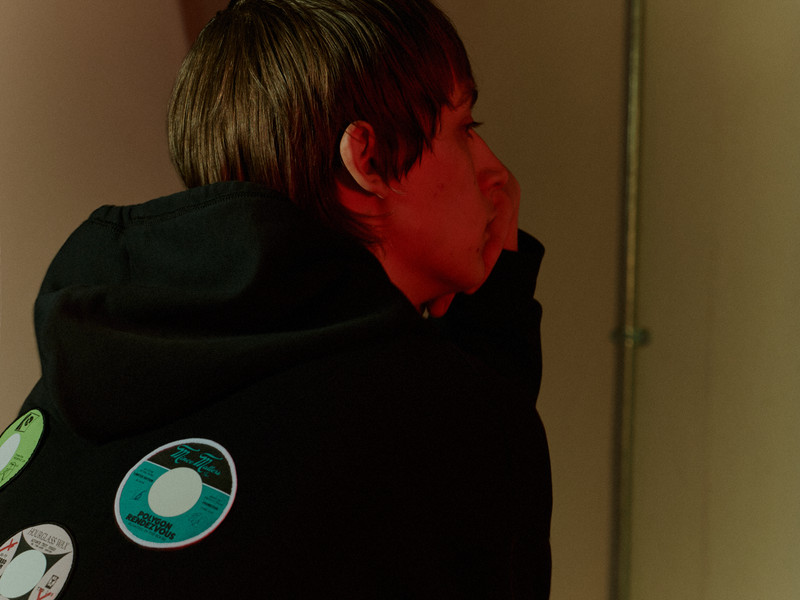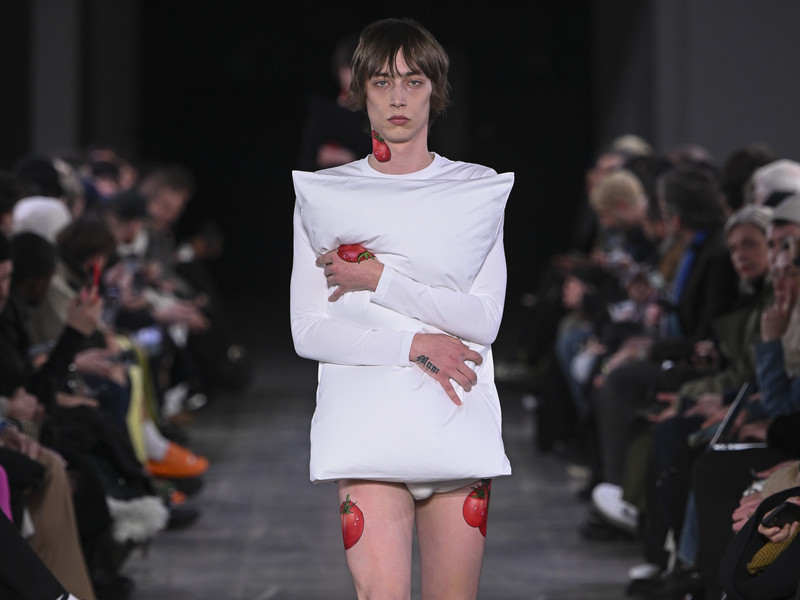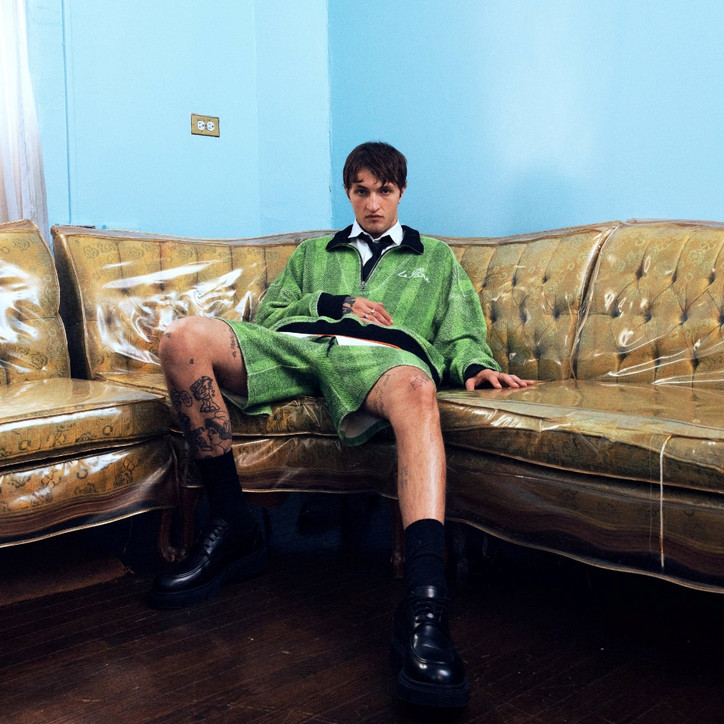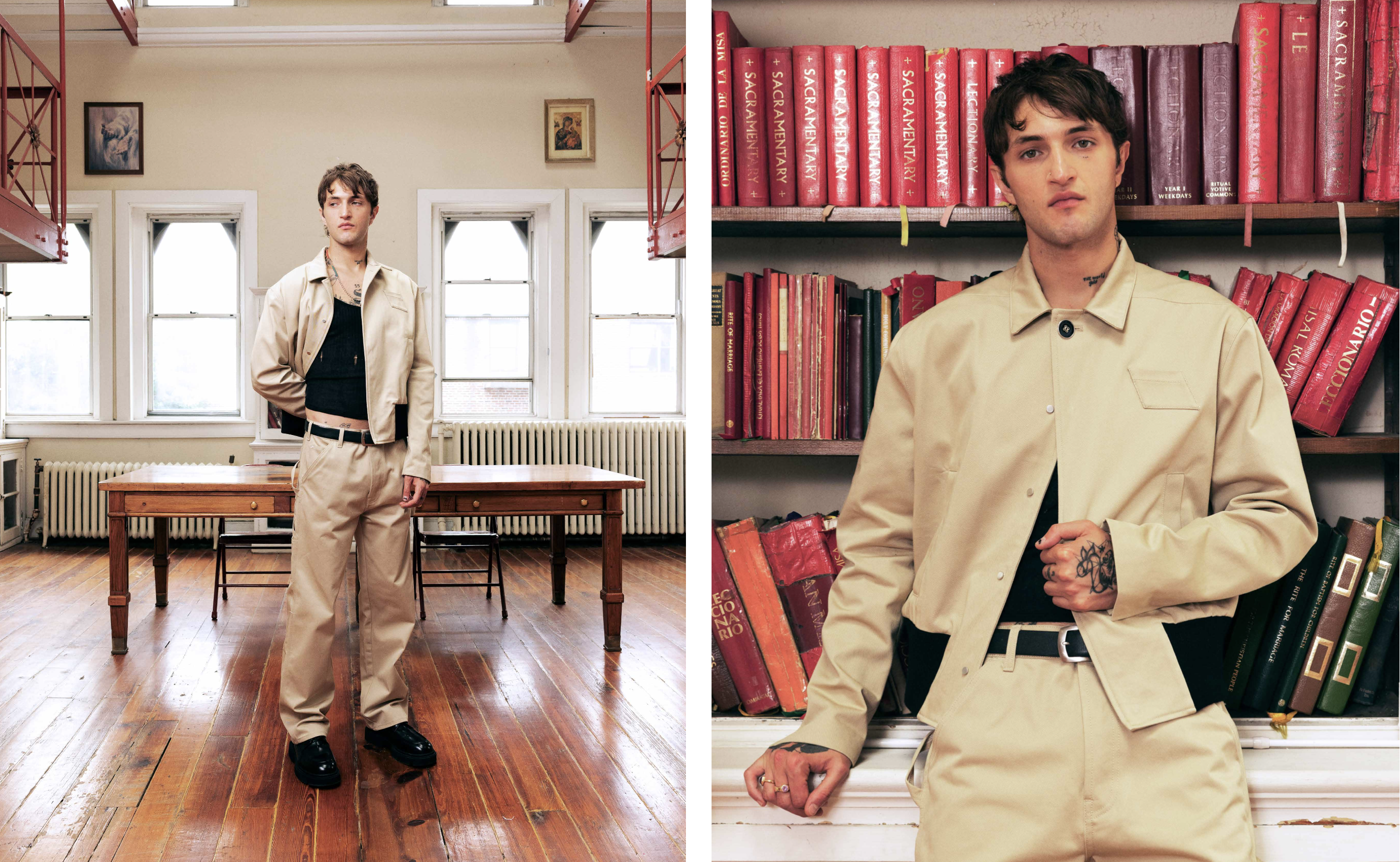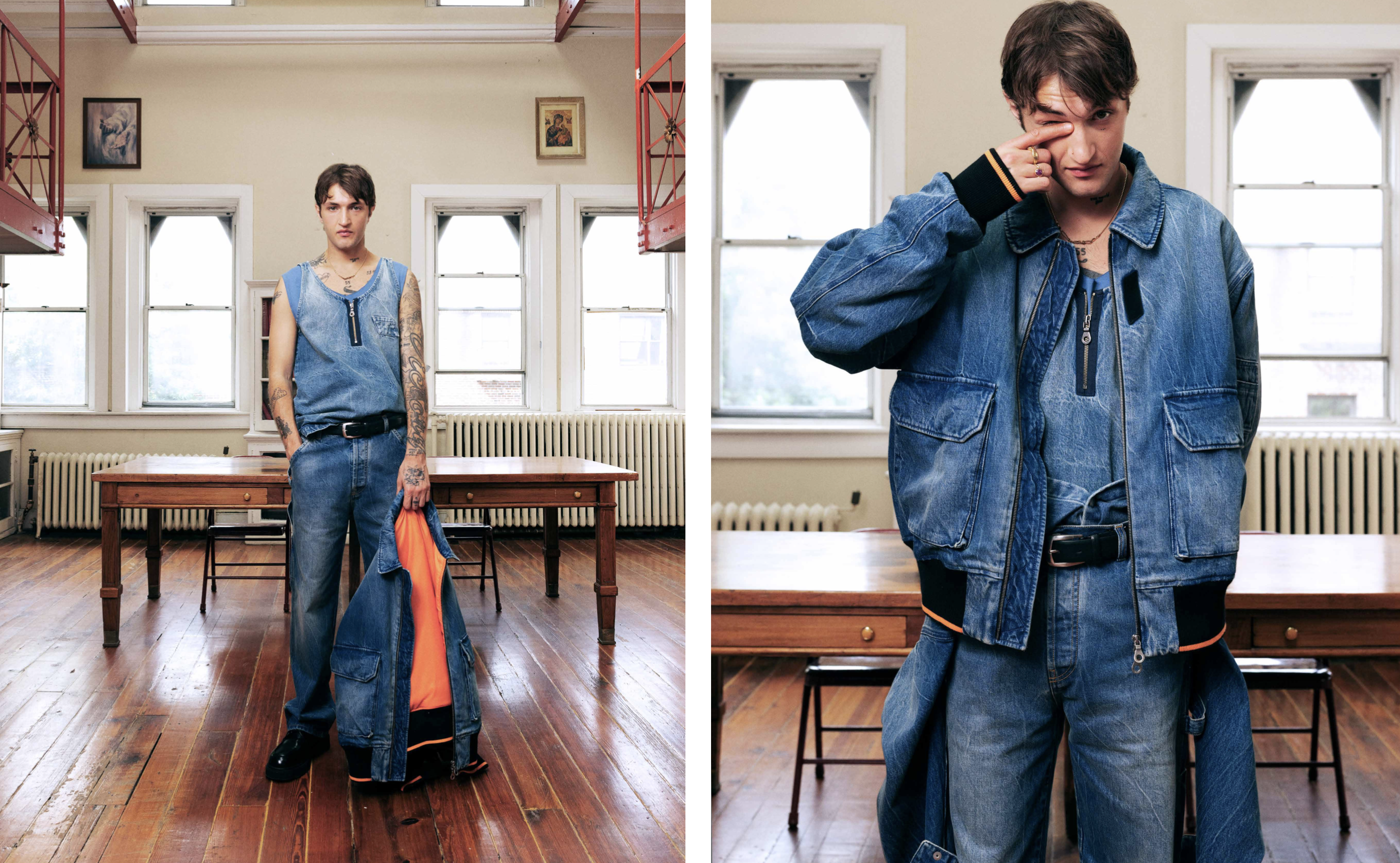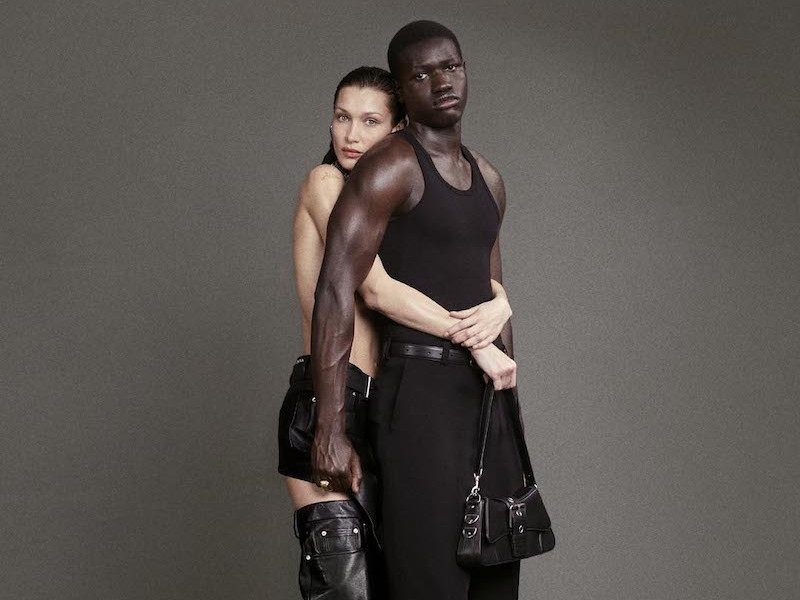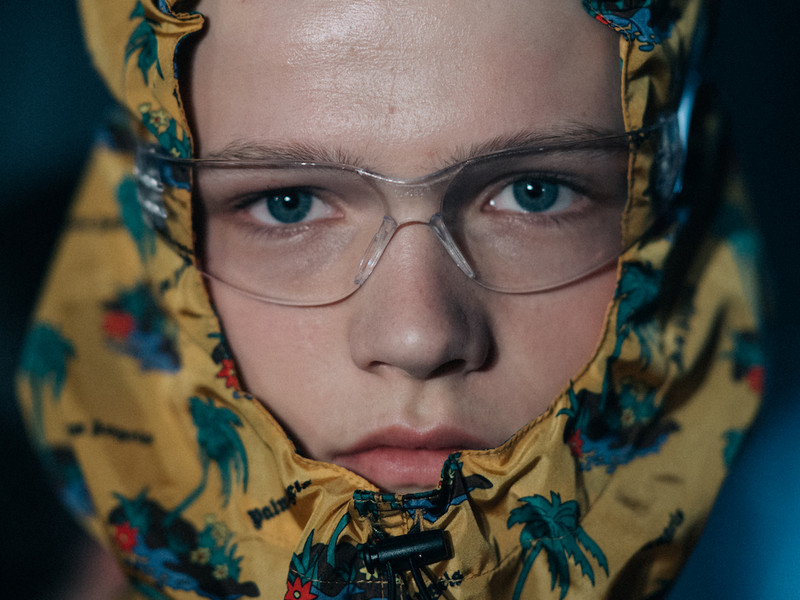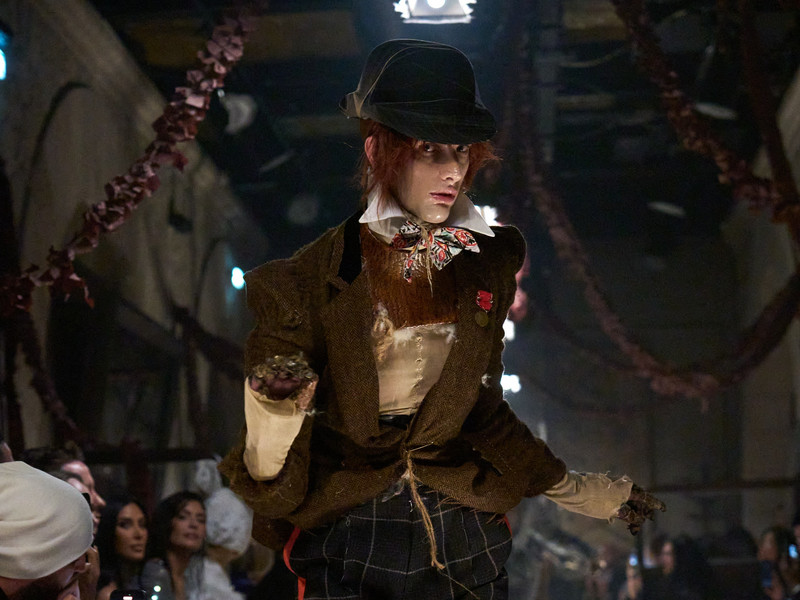Fairytale Denmark
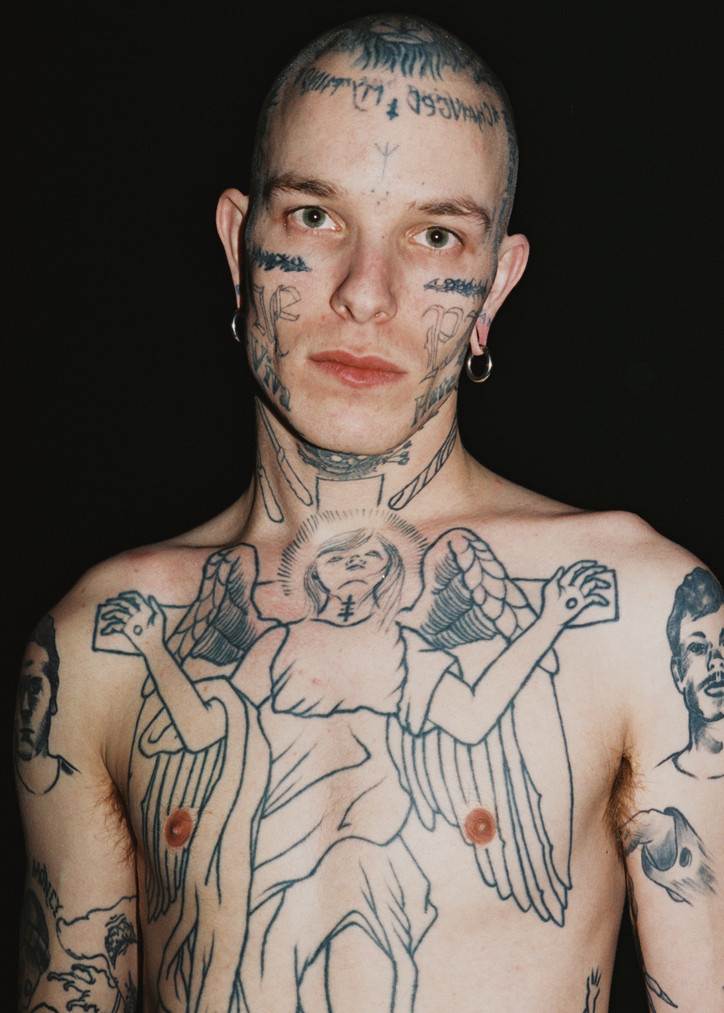
Aptly titled "Fairytale Denmark," the collection marked the brand's Paris Fashion Week debut, and much like everything they do, was more than just a fashion show. Davidsen, who has a background in graphic design, carefully curates every aspect of his label, creating specific imagery and fashion films to accompany each collection. It's a 360 Han Kjøbenhavn experience—always.
"I’m not gonna shoot myself in the foot and say that design is not enough, because it can be," he explains. "I just feel that by telling stories, you’re able to connect with the audience on a deeper level, and can hold a place deeper within them for a longer time—[...] it’s not about that specific collection in that moment."
It's an exceedingly rare attitude in the current cultural climate—one in which brands have to sell their souls to the influencer gods and essentially mass produce in order to survive, and where new brands pop up on Instagram basically every minute. But not Han Kjøbenhavn. With his brand, and everything that comes with it—from fashion shows to films—Davidsen is more focused on producing deeply personal work that creates a connection with and gives back to his audience. As for everything else? "Either you get it or you have it, or you don’t," he says. "You can’t fake that."
Read our interview with the designer and view photos from the brand's Paris debut, below.
Tell me about the brand. Why did you decide to start it?
We started in 2008—about ten years ago now. We actually started out by doing eyewear first, until we established the brand. We just start growing, so we took the money we earned and reinvested it, and kept developing new ideas. Quickly, after two seasons, we moved into clothing. And then we just kept expanding—bigger and better collections. It was all very organic. But first and foremost, what we wanted to do was create something very conceptual. So always, from the start, it’s been our aim to create a product that we thought would be cool, and make sure everything we create around the product is just as interesting.
Do you have background in design?
No, I have a different education—I’m an educated graphic designer. I had been a creative director with an advertising agency for thirteen years, so it was really different route into [fashion]. But I think my graphic design background is something that’s helped me a lot, especially because of how you create nowadays. There are a lot of parallels, but there are still things that you need to approach differently, and to learn and get your head around. But I think having a strong graphic design education has helped me a lot, using it as experience to help create what we’re doing.
What was the impetus for moving from graphic design and creative direction to fashion?
I think some things are just by—I wouldn’t say coincidence—but the guy who started Han with me, Tim, was my friend. We knew each other for a couple of years—we met at a football game—and Tim was in the fashion industry. We started having loose conversations about doing something together. We would talk about fashion and how I would approach it with a more conceptual mindset, and we just kind of jumped into it when we had the breathing space to think about what we wanted to do. Then we just kind of did it. But for the first four or five years, we still had other jobs on the side. When you start building a product, I think the biggest strength you have is to be able to say no to the wrong opportunities.
How do you describe the aesthetic of the brand?
Let’s just say avant-garde streetwear. But I think we’re a little bit more abstract than streetwear—we drag stuff out so it moves away from the classical perception of what you’d expect from it.
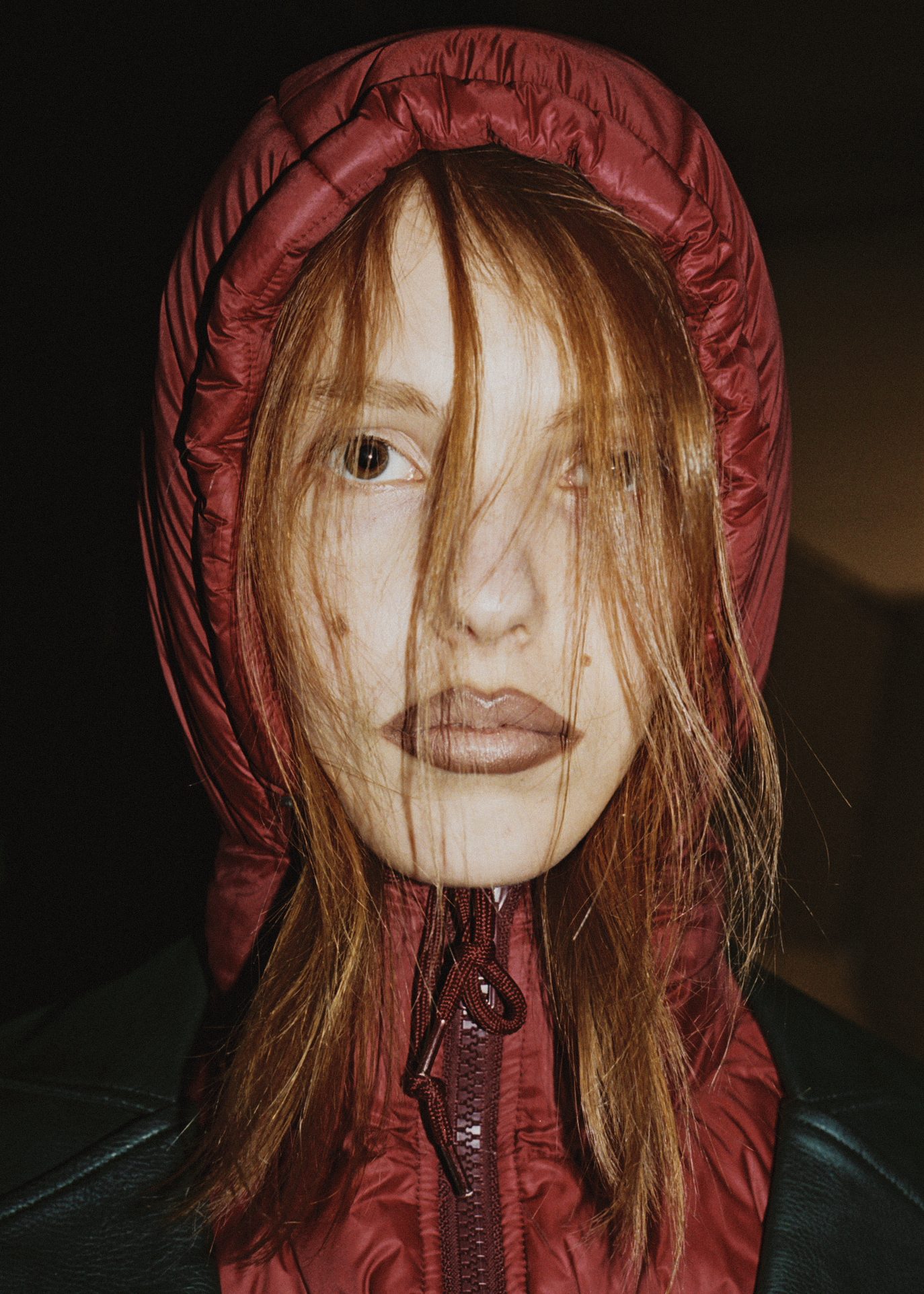

What about your latest collection—what inspired it?
The new collection is called 'Fairytale Denmark' and it’s about Denmark—how people perceive Denmark outside of our little country. For years and years and years, there’s been only one angle, which is like how do people look into what is Danish culture, and what is Denmark, and a lot of people think it’s this little fairytale country. And it is, but we’re from the suburbs of Denmark, which is a little bit more gray, with concrete blocks and a working class—it’s just a different kind of fairytale. So, we wanted to present a different kind of story about Denmark. It’s a very personal one—an account of how we grew up in a different kind of Denmark. It’s still a fairytale, just a different kind.
How do you think it fits into the larger narrative of Han Kjøbenhavn?
Well I think, for me of course, it’s spot on. We have a very social, realistic take on how we do stuff. And this also fits very much into that category. I also think, with this direction, there’s a lot of—for lack of a better word—meat on it; there’s a lot of interesting angles. So, in that sense, I felt it was right—the right direction for us.
This collection also featured womenswear. When did you start expanding into that?
This is our third collection with women, but overall, this is our biggest collection yet, and bringing it out on the Paris catwalk was big for us, as well. But it’s a challenge that we like. It’s an interesting thing—I’m not saying we’re creating a new kind of female here—but we’re working a lot to bridge the gap between men and women—I think that’s where our clothes exist. So, it’s been a super interesting challenge to see the Han Kjøbenhavn take on women, and also looking at the landscape in Denmark to see how feminine women here are. Creating that bridge has been a challenge because it is a fragile space. So, it’s something we’re really focused on doing and doing the right way. But I feel like we’re finding the right attitude and we’re uncompromising in how we do it.
Is your approach different when it comes to womenswear? Or is there an overall vision you have for the brand that leads you to approach everything in the same vein?
I’m kind of creating a common concept for both of them. So, no, I don’t have a male concept and a female concept—I’m just creating something where I know both the female and male can exist within, and everything I’ve ever created, for all of our collections, has been based on personal experiences. For me, it’s just super important to be telling the truth.
How would you describe Han Kjøbenhavn customer this season?
I’ve had this question a few times. I would never confine it to an age or a certain character. I just think we’re selling stuff to people who are interested in the layers of a brand, into people who are more than what meets the eye. That’s why we also have such a close relationship with our customers, and the people who appreciate us—because there are so many layers to what we do. So, people have that opportunity to connect to a brand on another level. I mean, it almost sounds disgusting to say, ‘I do it differently,’ and that’s not what I’m saying. I’m just trying to create stories with layers that people can dig into.
Is there anything that you haven’t done—whether it’s a specific thing like accessories, or footwear, or a collaboration—that you’d like to do in the future?
We had a few good collaborations with Puma, and we just did our show in Paris—those were both goals of ours a few years ago. So, we’re definitely happy with that. My aim now is to just establish ourselves within the Paris and international fashion market, and be able to keep producing the kind of shows we produce in Denmark—shows that people have to have an opinion about. The more shows you do, the bigger the audience, the more dialogue you create, and the more real it becomes.
You said people can’t not care about your shows. I think that’s such a huge problem in the industry right now—because of fast fashion and the constant output, that there are just so many things that people don’t notice. So, I think that’s something that we’re missing—more brands that make something people have to respond to.
That’s true. But I also think that sometimes the brands that are creating something that you have to respond to, even spectacular stuff—it sometimes gets drowned out by, again, fast fashion spitting out five-hundred products a day on the same platforms that have almost a monopoly. Right now, there’s just too much for me—there’s too much shit out there, and it’s difficult for the consumer to navigate through. The brands with the most money, who are pushing the most, yelling the loudest—those are the ones that get the most attention. It’s not necessarily who has the most interesting stories, or clothes. So, I think that’s a big challenge for us as brands, as well as the industry and consumers.
There’s also a fine line—with so many people doing so much, it often feels like some brands make a statement just because they feel like they have to. Like, if you’re printing a political slogan on a shirt just because, it loses all of its value.
Hype itself is a dangerous thing, and a lot of the hype shit is the same, and there’s no depth to it. There’s no integrity—it’s just the same bullshit. And hype is a difficult thing because what do you do afterwards? You build it up, and then the next one comes, and you’re yesterday’s news. That’s why what we’re trying to do is build by layers—layer by layer by layer, to create a platform which is strong. Over last three or four years—how many brands have you seen blow up and then die? It’s insane. The brands that were hyped a year ago aren’t even here anymore.
That’s the problem with hype—everyone gets so excited about one thing, but because of the nature of fashion and everything we’re talking about, the next brand delivers the next thing, and by the time anyone even thinks about looking at your whole collection it’s like, ‘Who is that brand you’re talking about?’
Right. And it’s an unhealthy thing for creatives, too, because where is your business model? Are you even able to produce? It’s so difficult to create a brand that’s competing with relevance, and creating a healthy business. And a lot of the brands that get that quick hype die because the machinery isn’t even able to deliver on that promise. If you don’t deliver on your promise, you’re fucking done.
Right. And sometimes hype can hide a lack of depth or talent. So, someone gets huge hype and when it’s time for them to actually deliver, they can’t, because they’re not actually good at what they do. For the people who are talented, it becomes more of: ‘How do we get more hype than the last one?’ So, it becomes about living up to something, rather than just creating good work.
Well, that’s the thing—if your aim is just to reproduce the hype, you’re going to fail. You can’t explain hype, or why something becomes popular. So, you cannot reproduce something that just happened because of a lot of different factors. And like you said, there’s a lot of hype with no fucking talent, whatsoever. But eventually, you’re going to get found out. Being able to create one cool t-shirt—anyone can do that. But how do you create a fashion show? How do you create a mood? How do you stage it? There are so many layers to what we do as designers, as brands. You have to be the best you can be in all aspects. That’s what we’re trying to do.
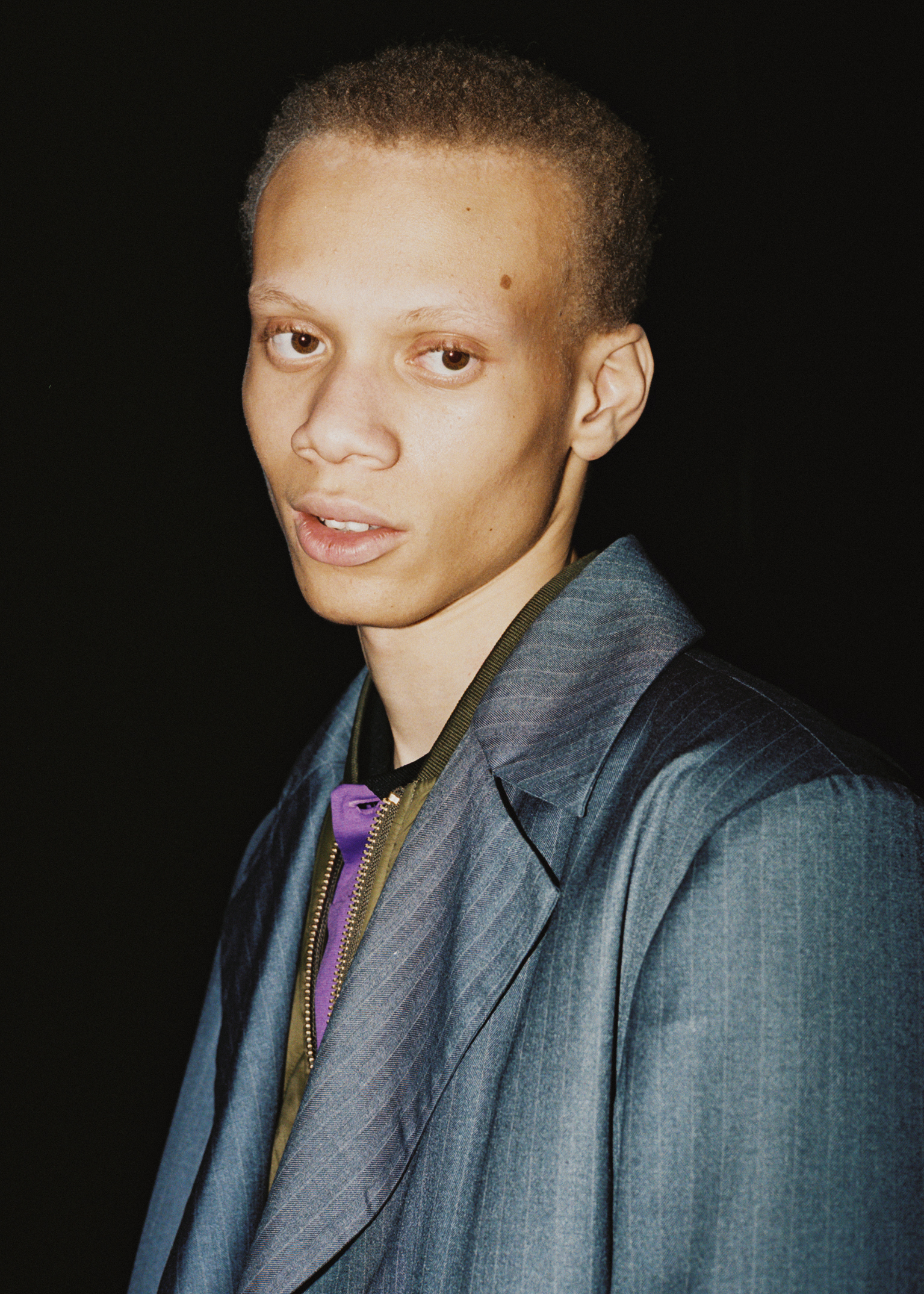
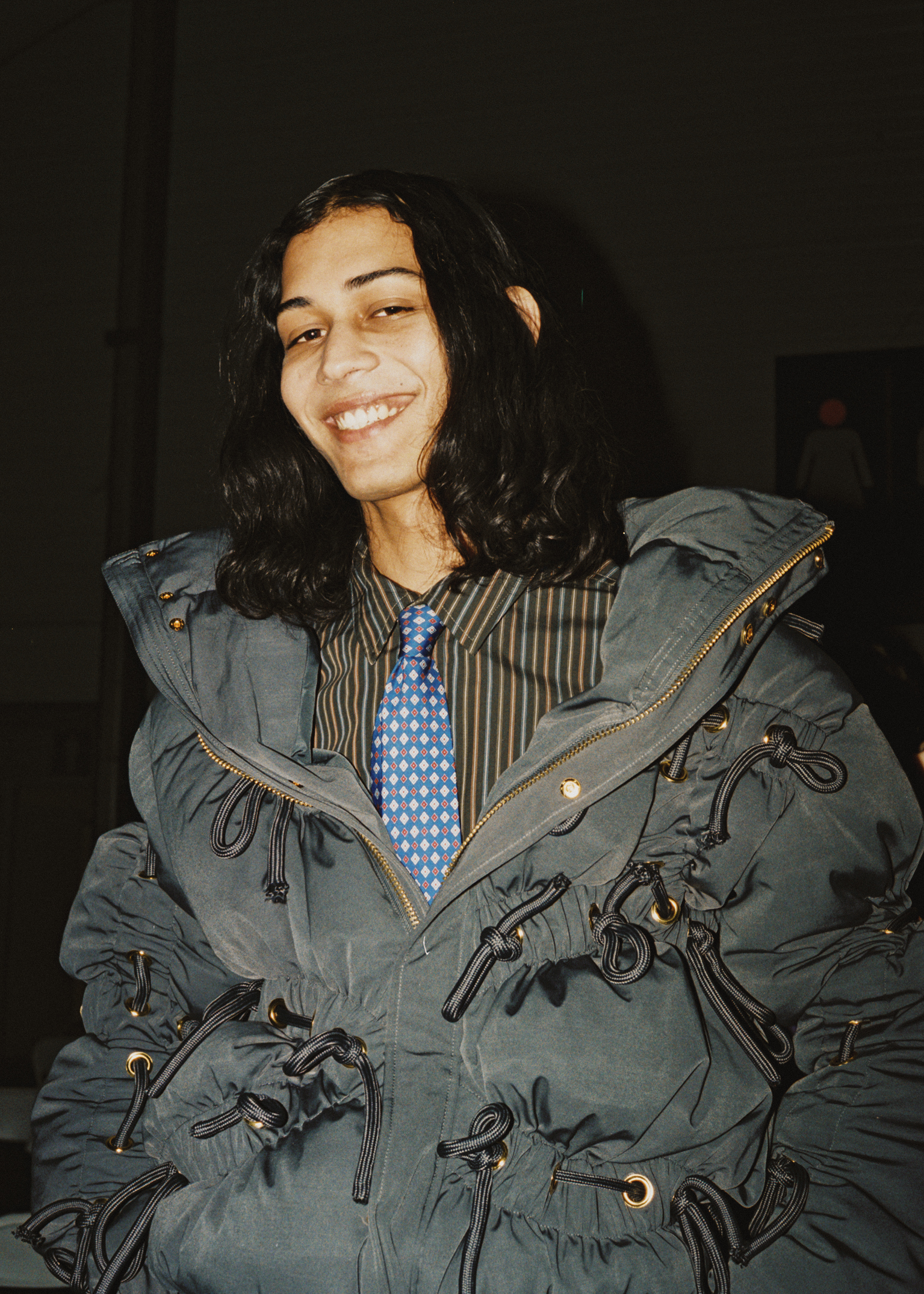
That’s also where social media comes into the conversation. Somebody sees you post your collection online and says, ‘Oh, cool shirt. I could do that.’ But they don’t realize how much goes into making, and even more importantly, sustaining a brand.
There are good things about social media—it can encourage young people to go out there and produce things themselves. It’s just that some of it has been happening for the wrong reasons. There are a lot of people in the industry who just want quick fame and a huge amount of followers. But it’s about creating those experiences—then the audience feels they’ve gained something by investing that little bit of their time.
How do you navigate all these things that we’re talking about? With so many products and brands coming out all the time, staying relevant is probably one of the hardest things for a brand to do right now.
It is, and it’s difficult. I’m a little bit cynical in that aspect. I don’t think you can fake it and stay relevant. What I’m doing is very personal. If my mindset, my way of thinking is not relevant, then I’m not relevant. I can’t force it. I cannot fabricate the relevancy, because I can’t fabricate something I’m not. Then it becomes hollow. Hopefully, I’ve experienced enough in my life and have a way of telling those stories that makes them relevant. But at some point, I might not be relevant anymore. Either you get it or you have it, or you don’t. You can’t fake that.
I don’t know if urgency is the right word—but it does feel like there is an urgency for a brand like yours, who makes things that are so personal to who they are.
I mean, that’s what we feel. But we have existed as an indie brand for so many years. There’s a lot of people coming up to me, patting my back saying, ‘Man, I really like what you guys are doing,’ and of course, I appreciate that. But sometimes, you also want to take that and create a business. That’s one of the reasons we went to Paris—you want to bring your story to a broader audience without watering it down.
Why did you start doing films—why has that been such an important part of your brand?
I’m not gonna shoot myself in the foot and say that design is not enough, because it can be. I just feel that by telling stories, you’re able to connect with the audience on a deeper level, and can hold a place deeper within them for a longer time. When you create a story, characters, depth, and you bring your collection and apparel into it—it’s not about that specific collection in that moment. It’s more than that.
What do you want your audience to take away from all of it?
I want the audience to be interested in us, in what we have to say, and feel that we bring them to a new place. I want them to connect with us on a deep level. But I also want people to feel that we give more back than we take, in terms of time. I want them to feel, ‘Oh, what I’ve invested, I’ve gotten back a hundred times.’
